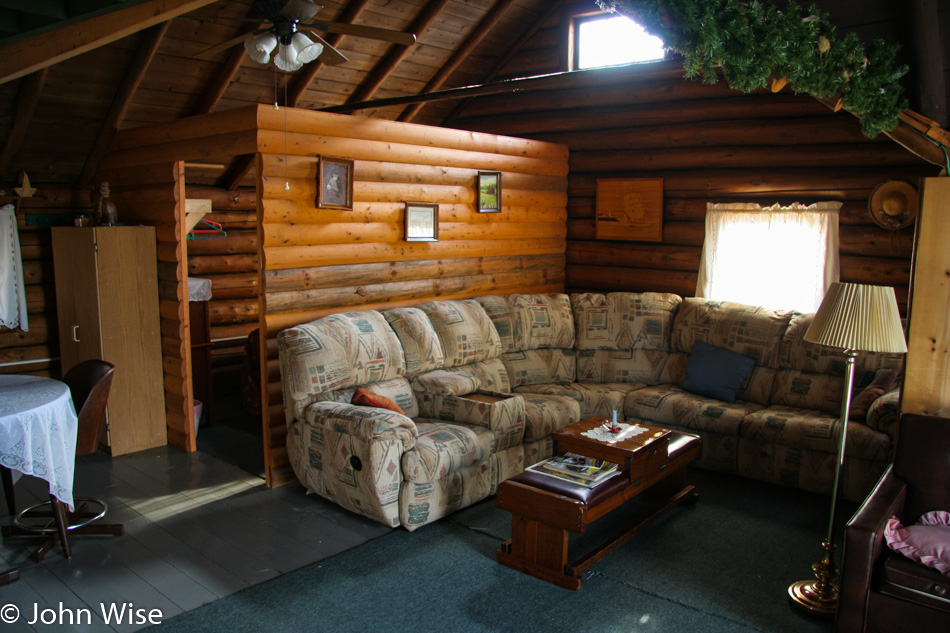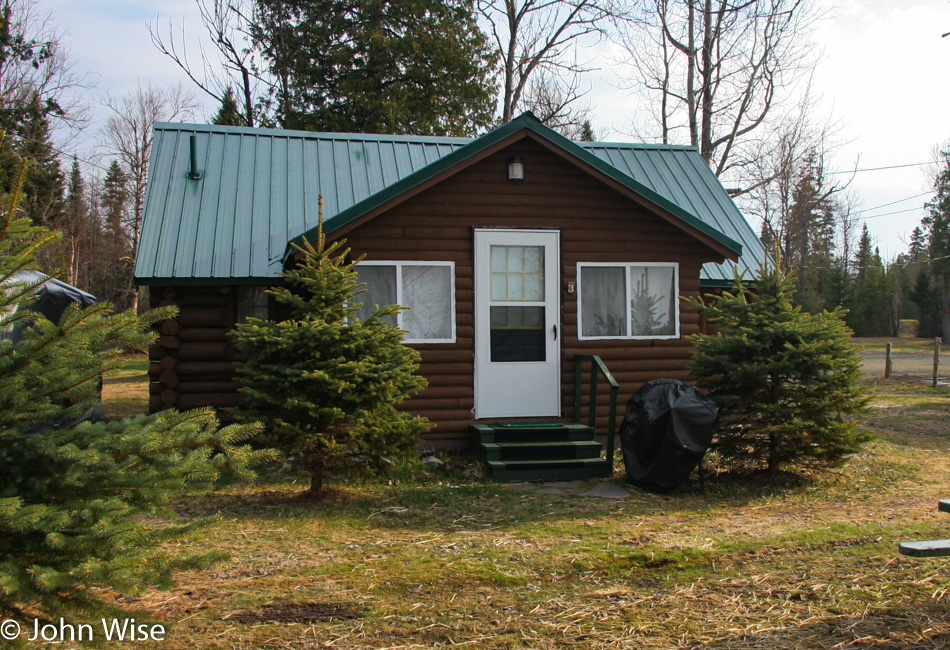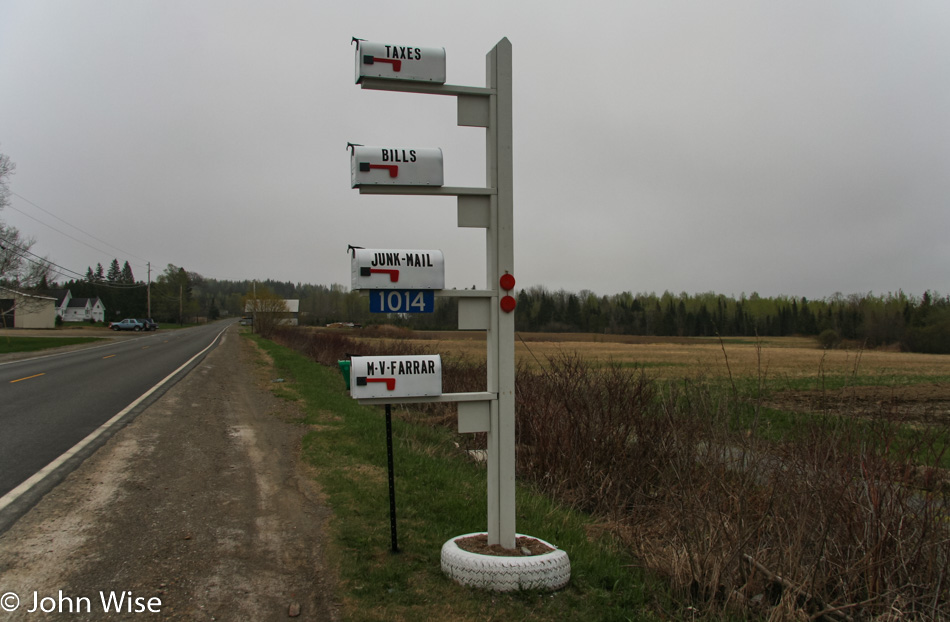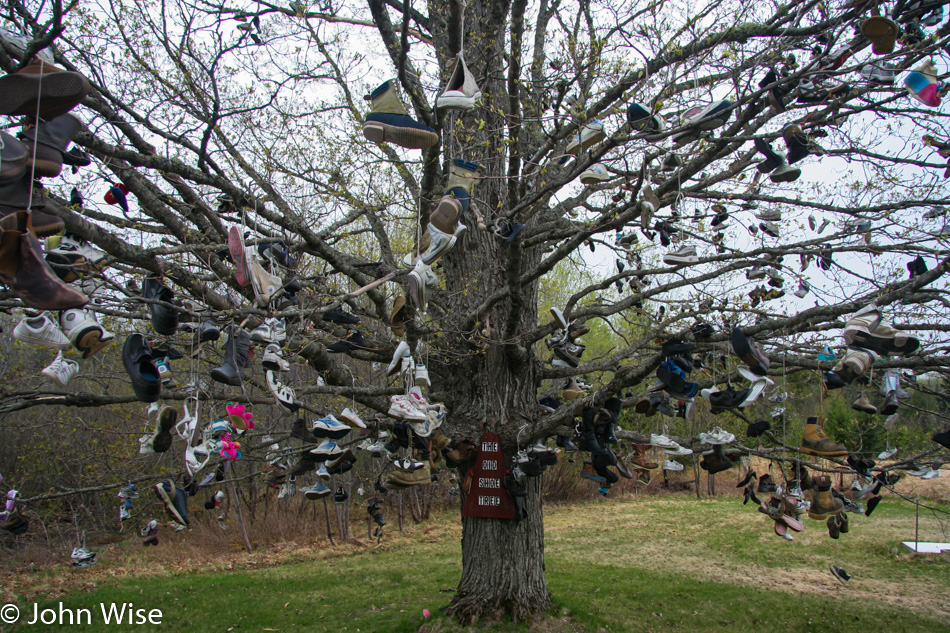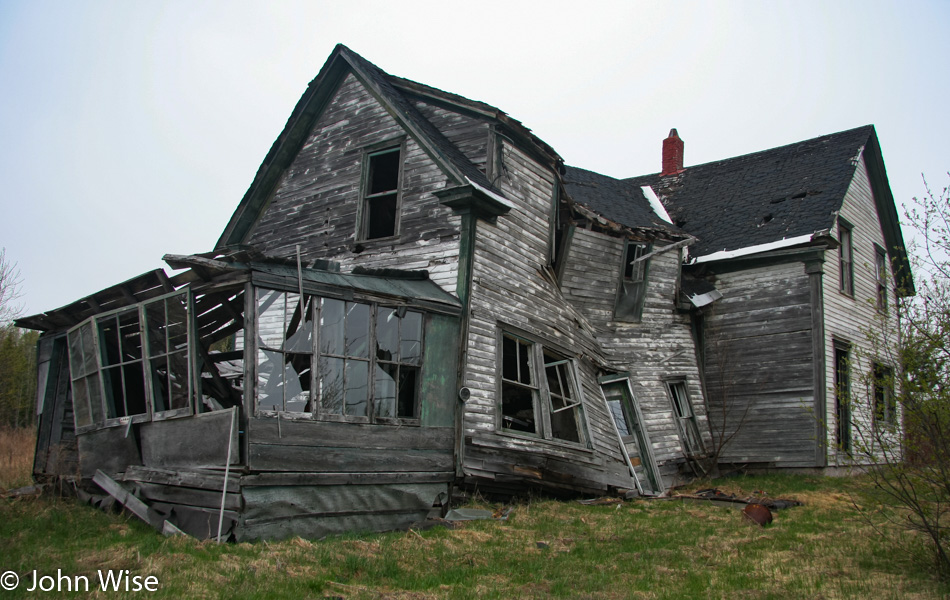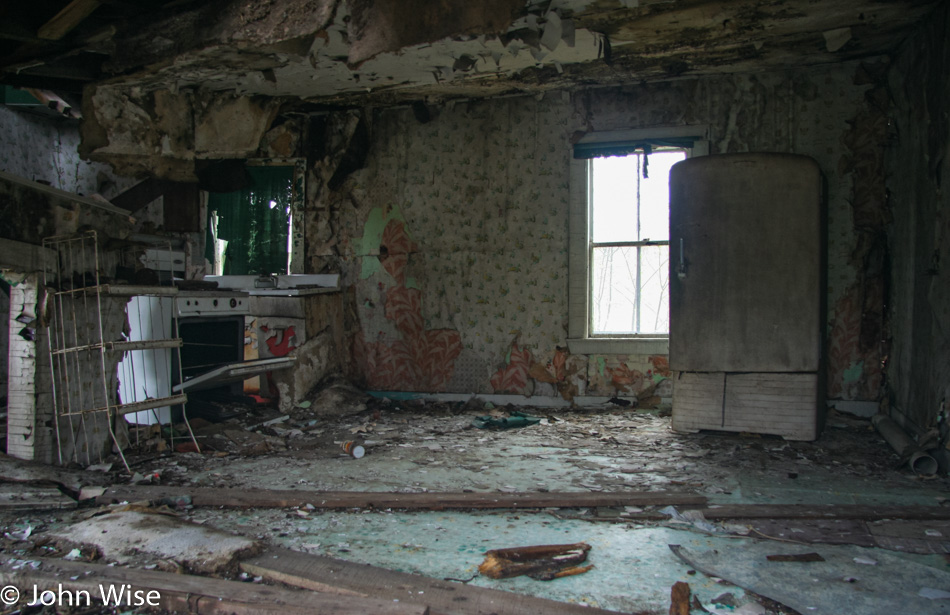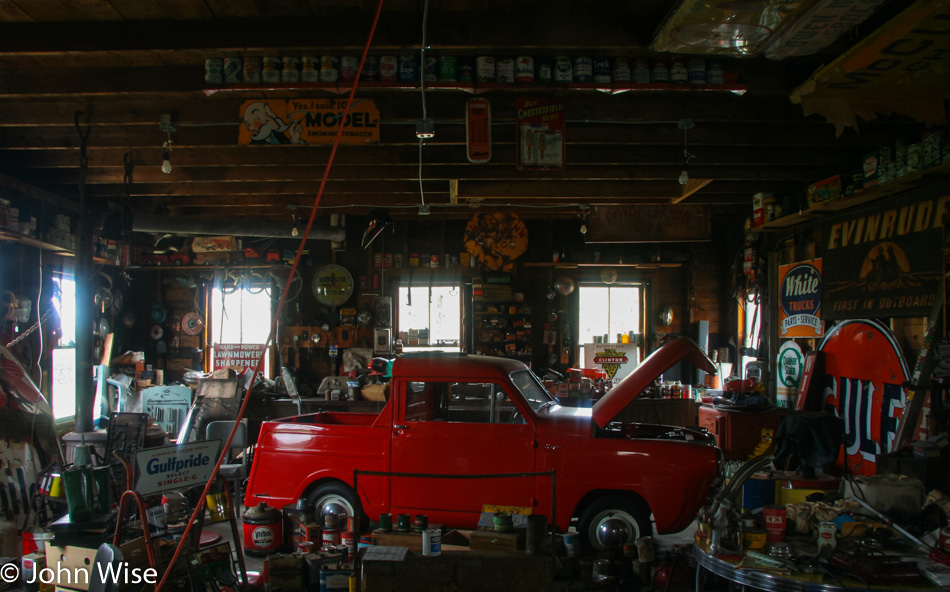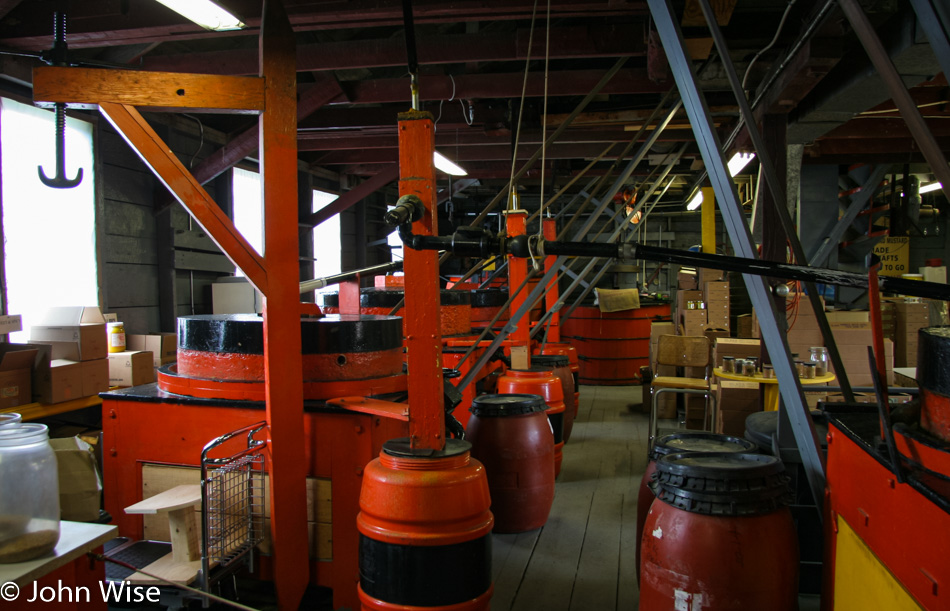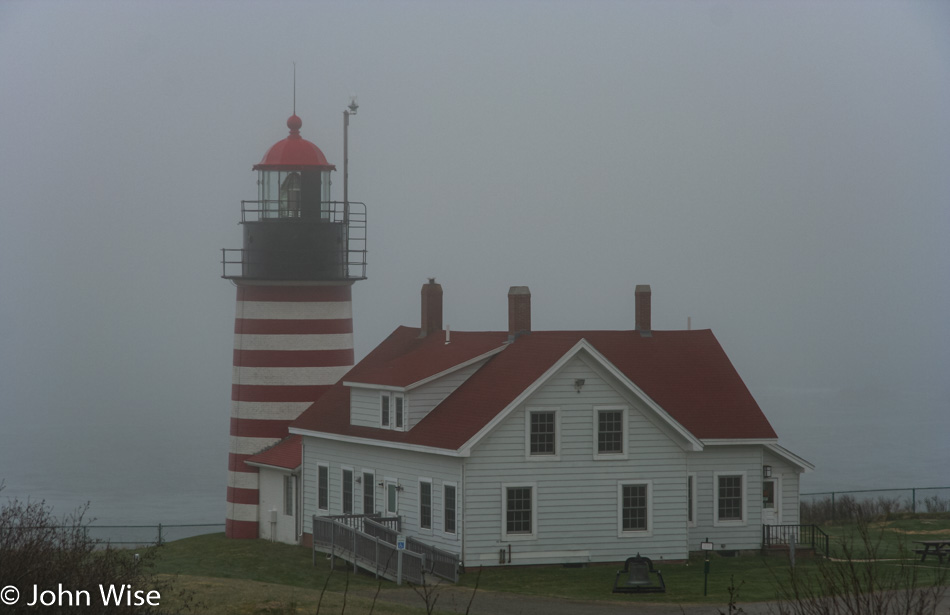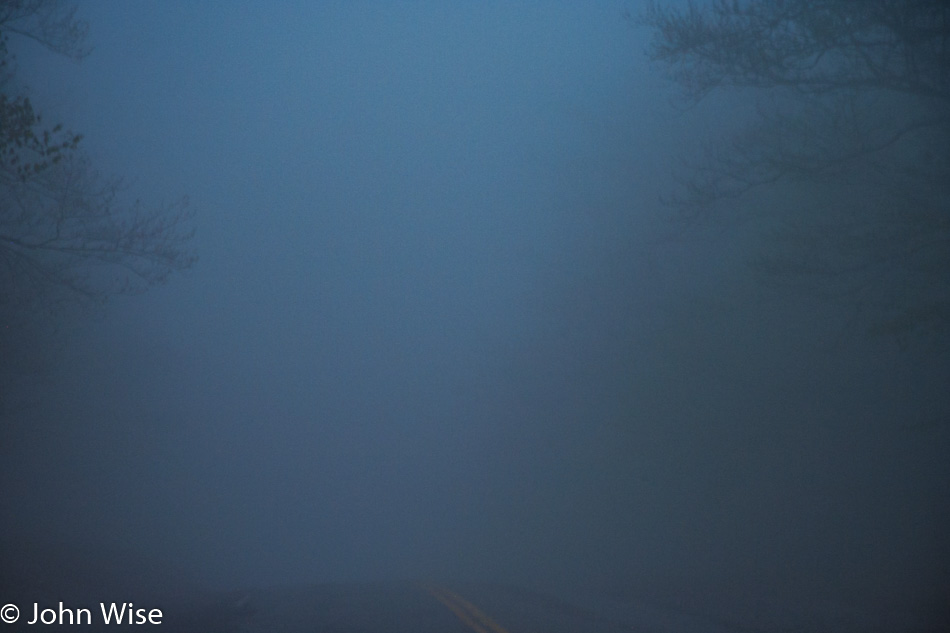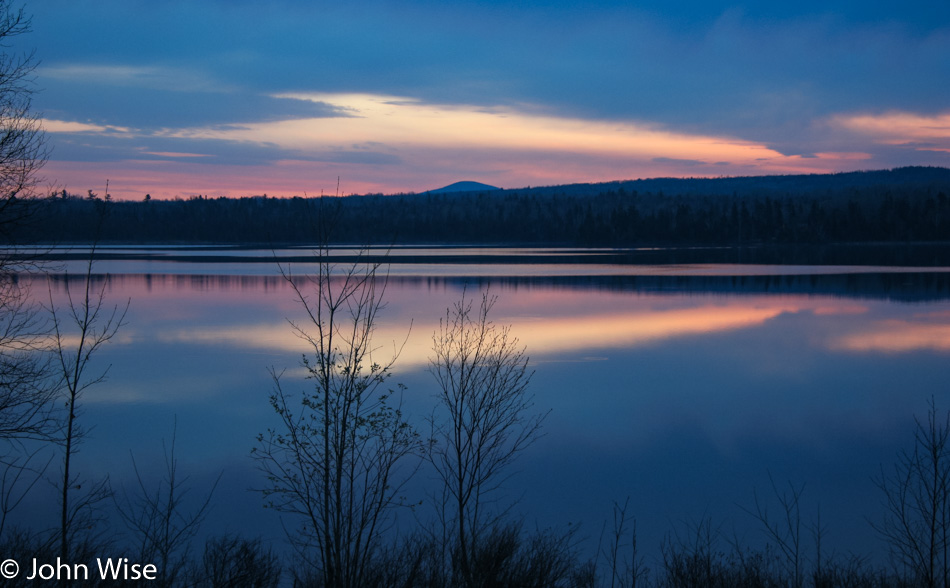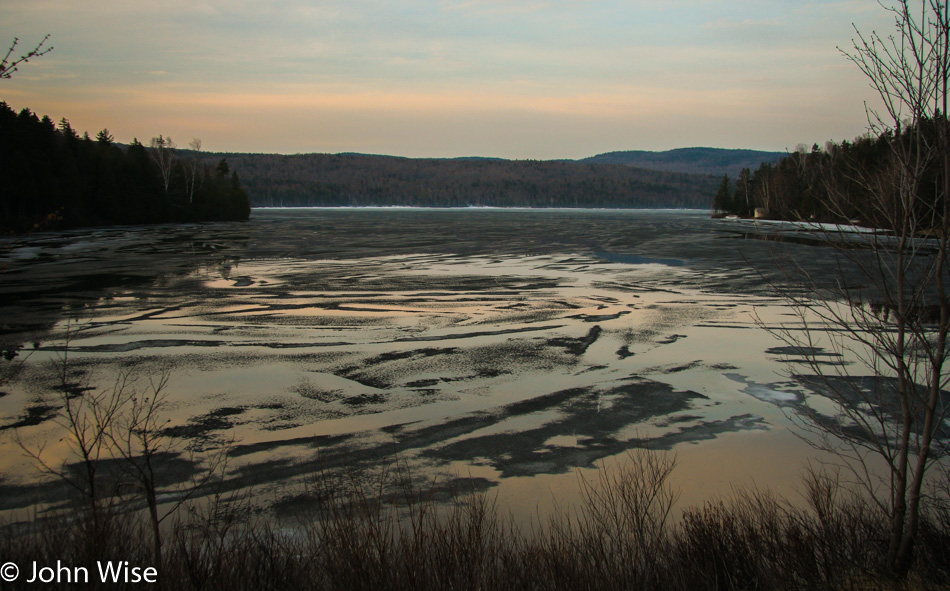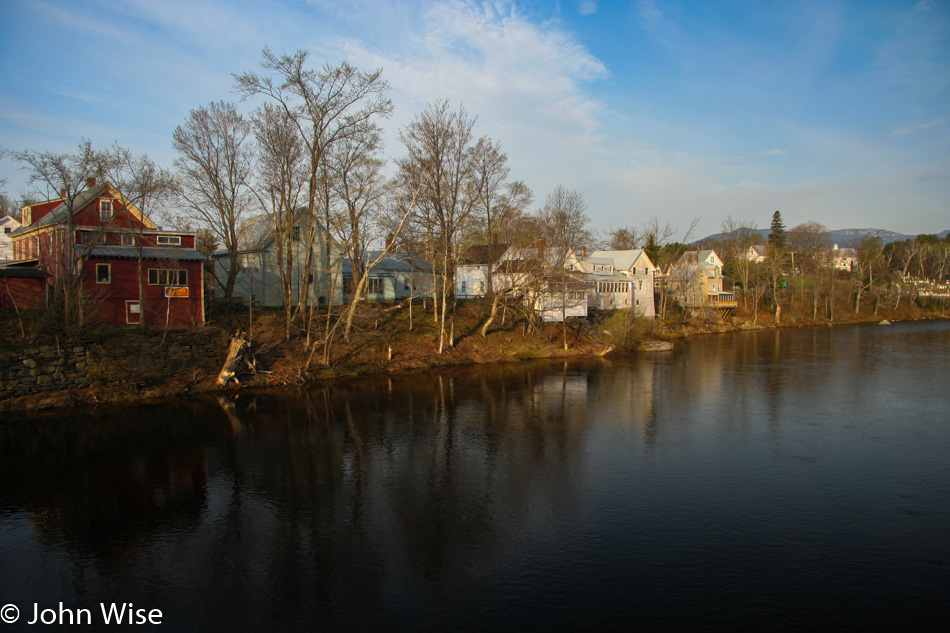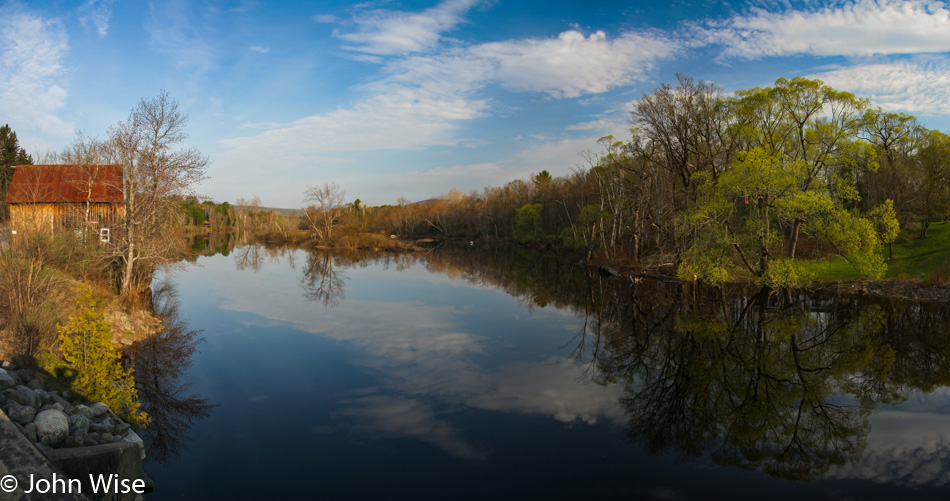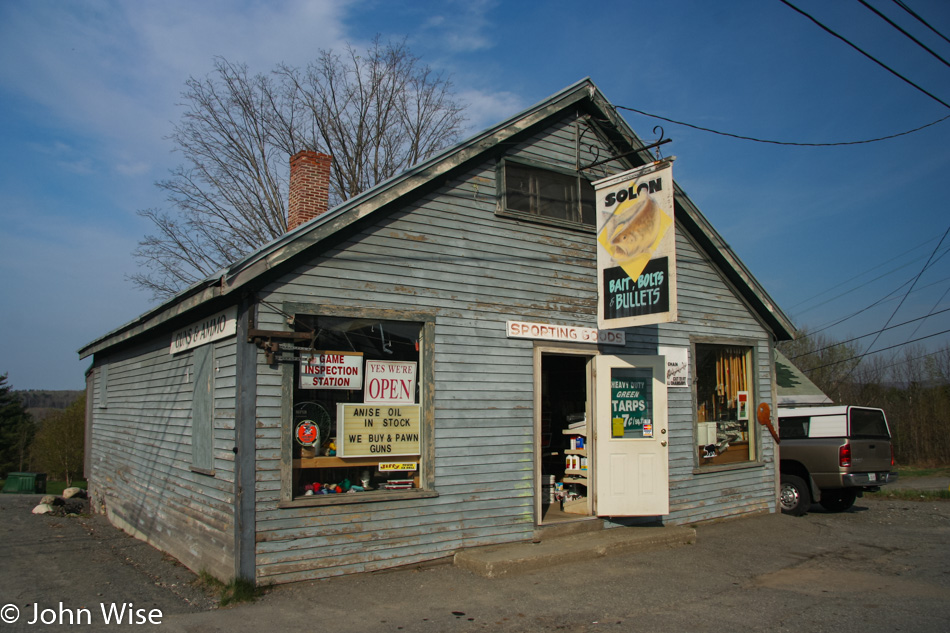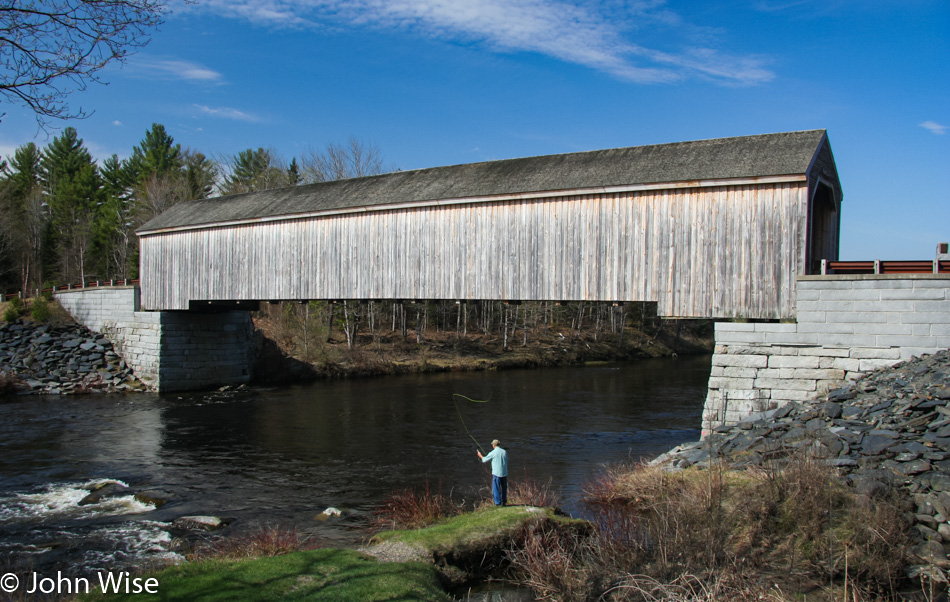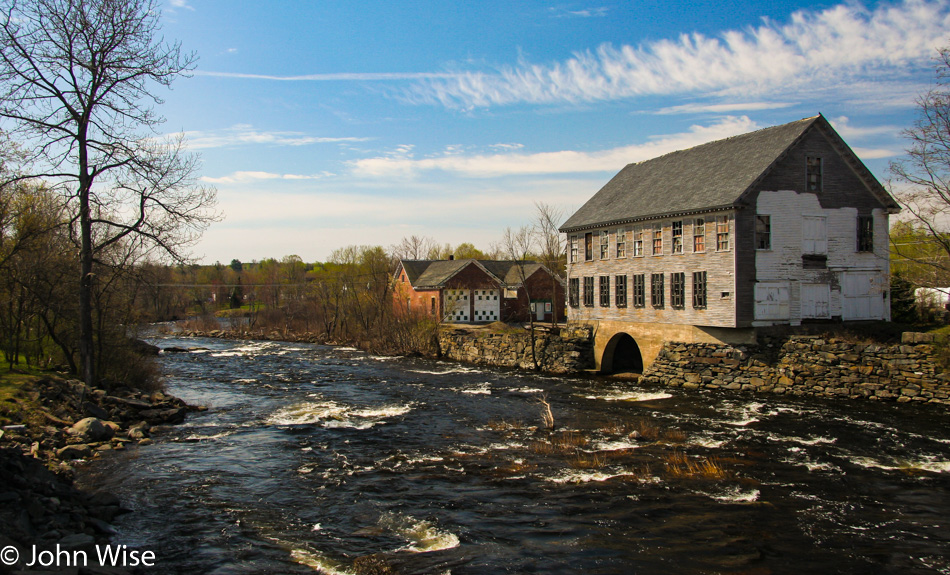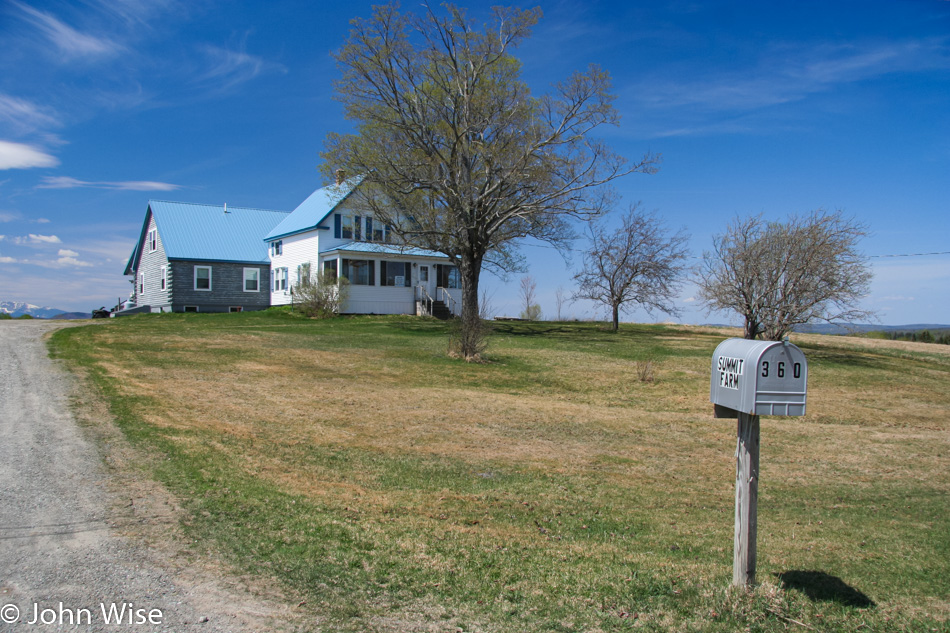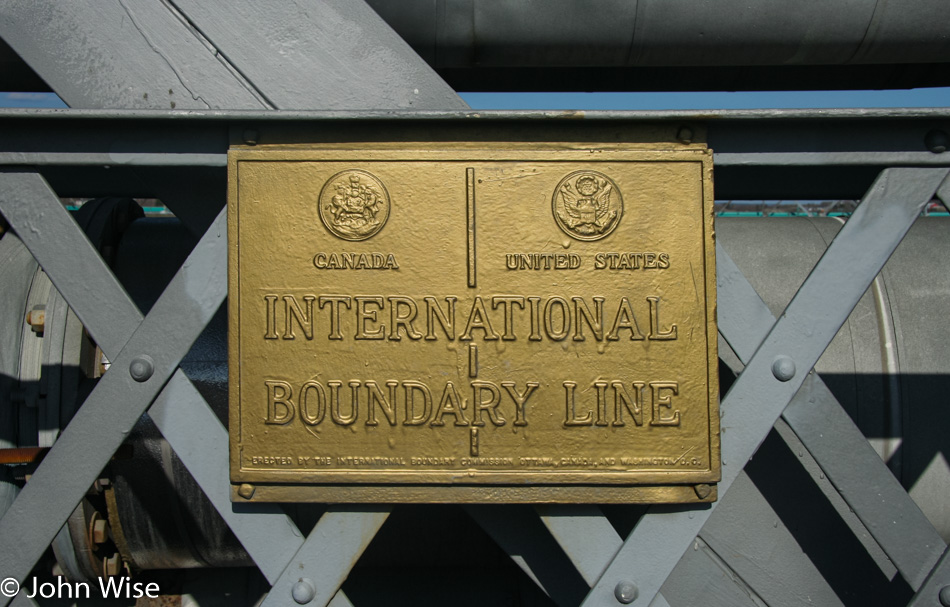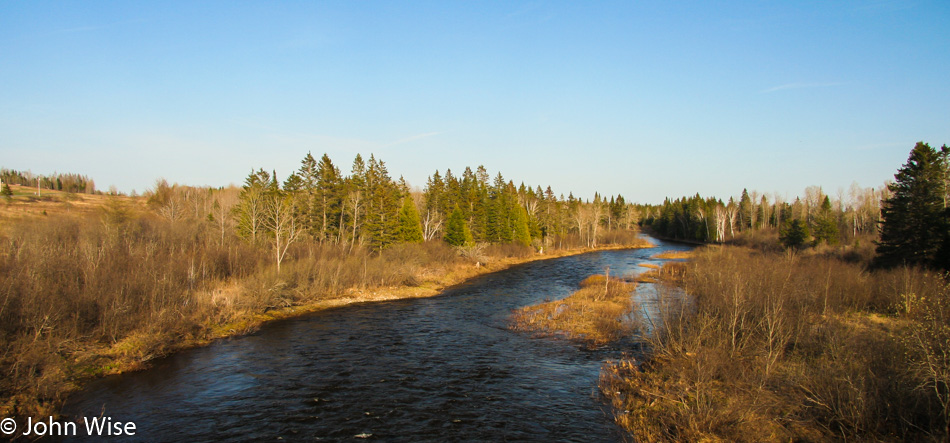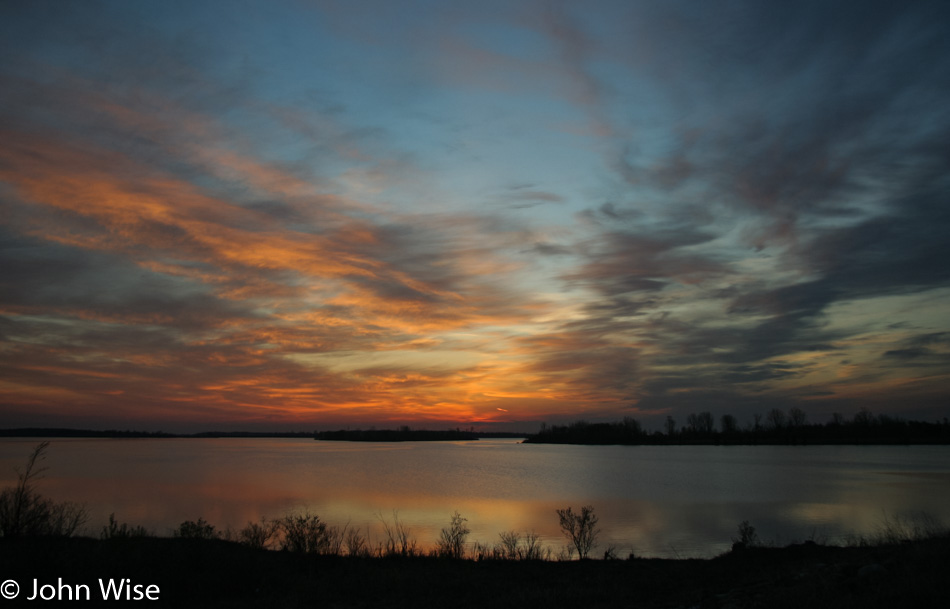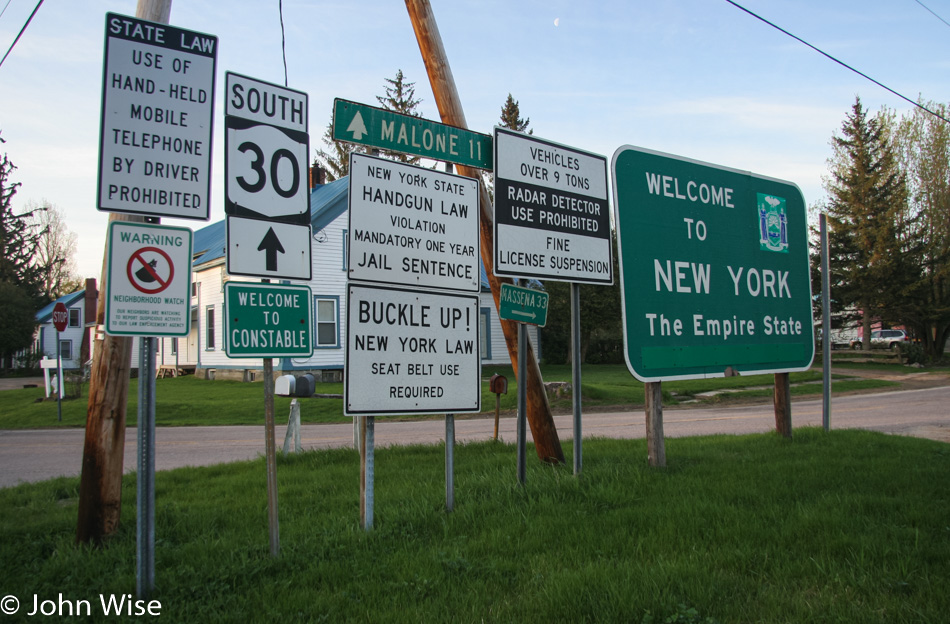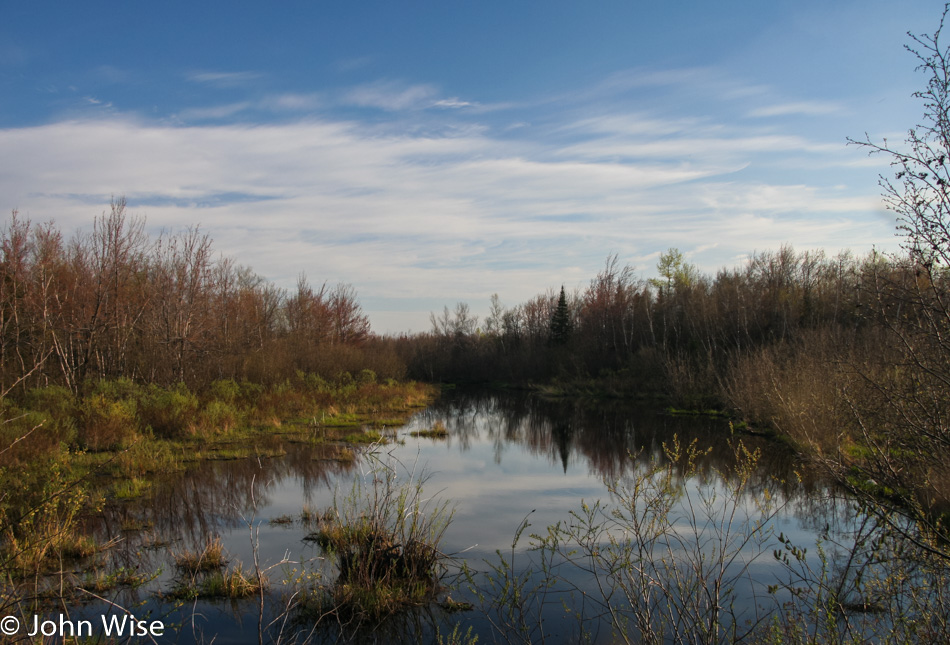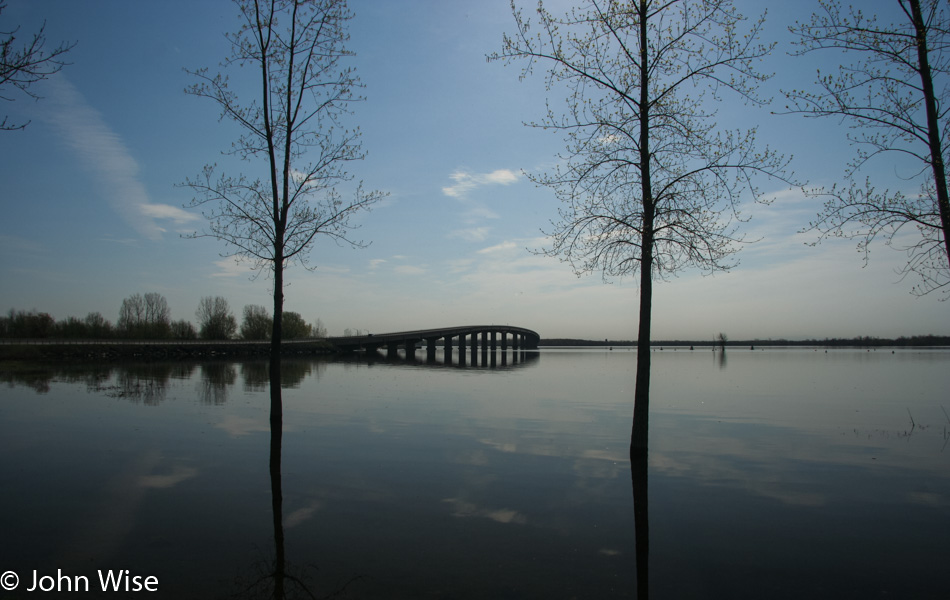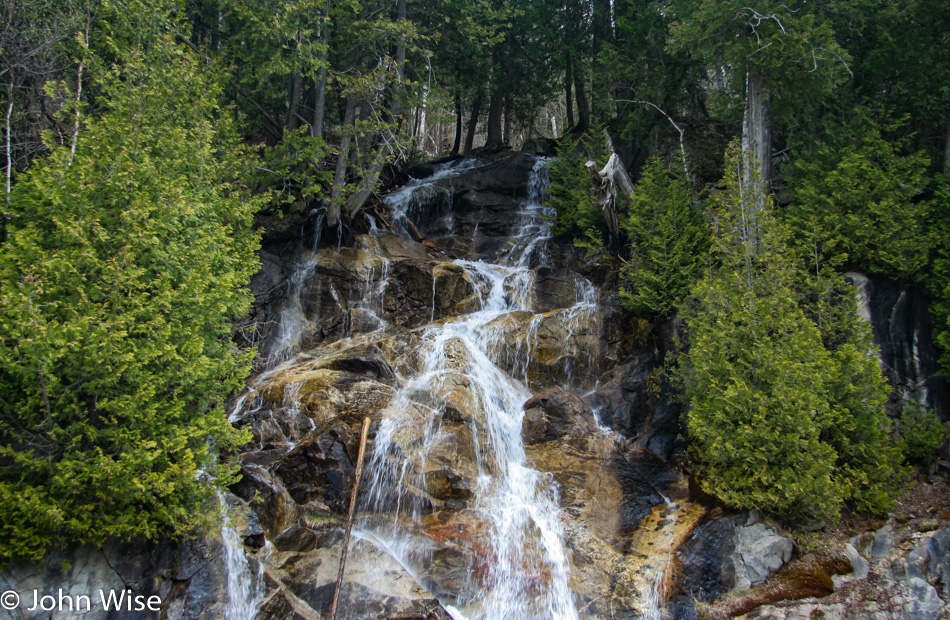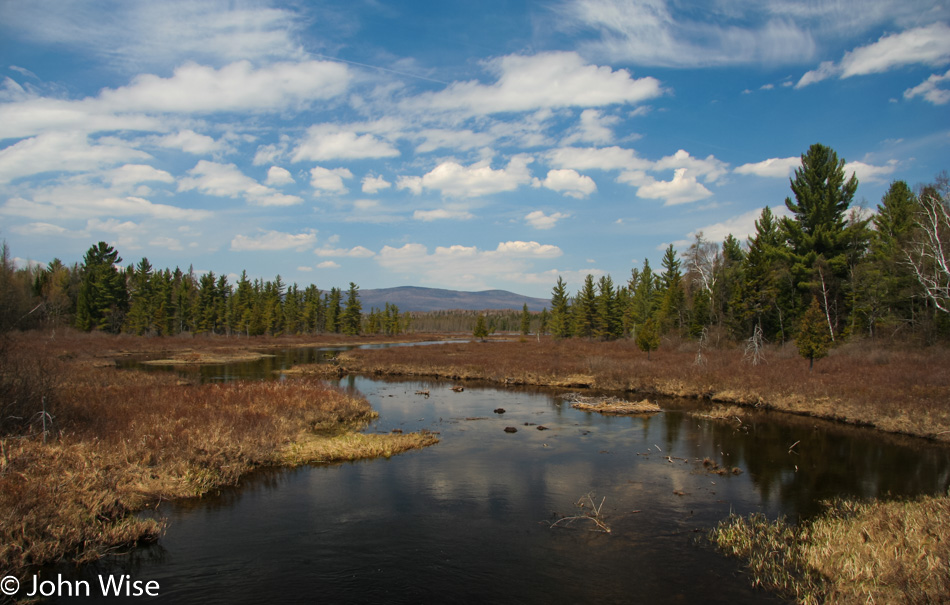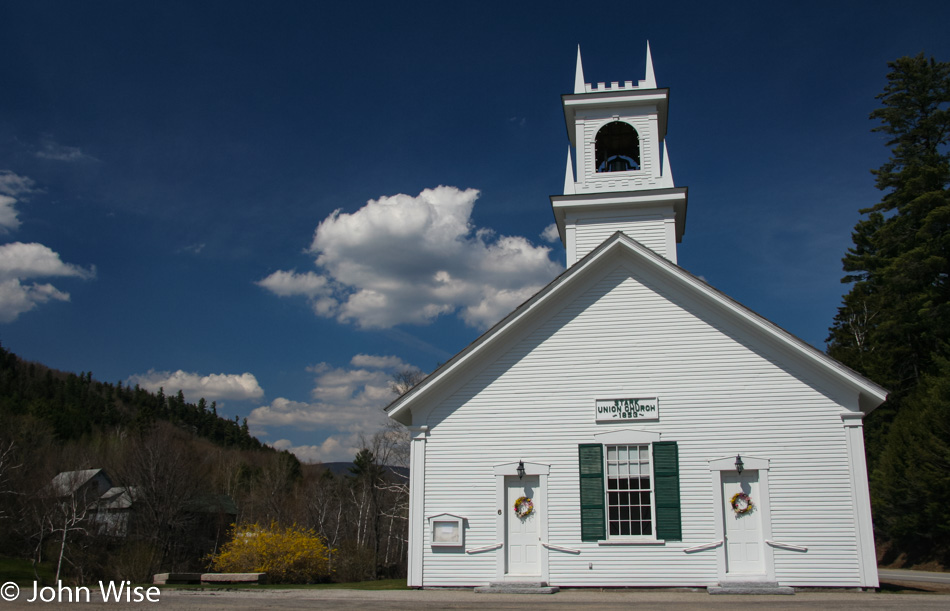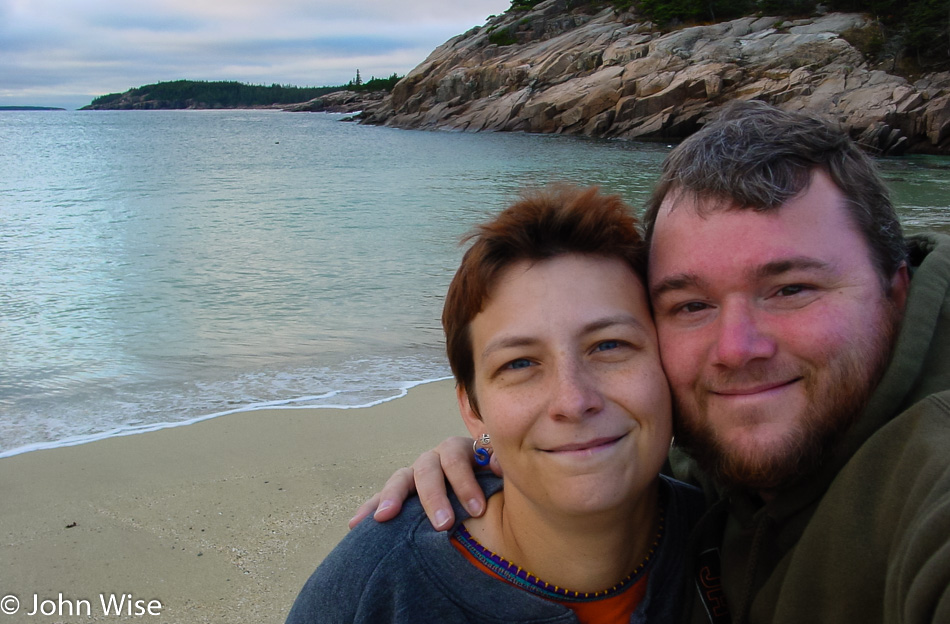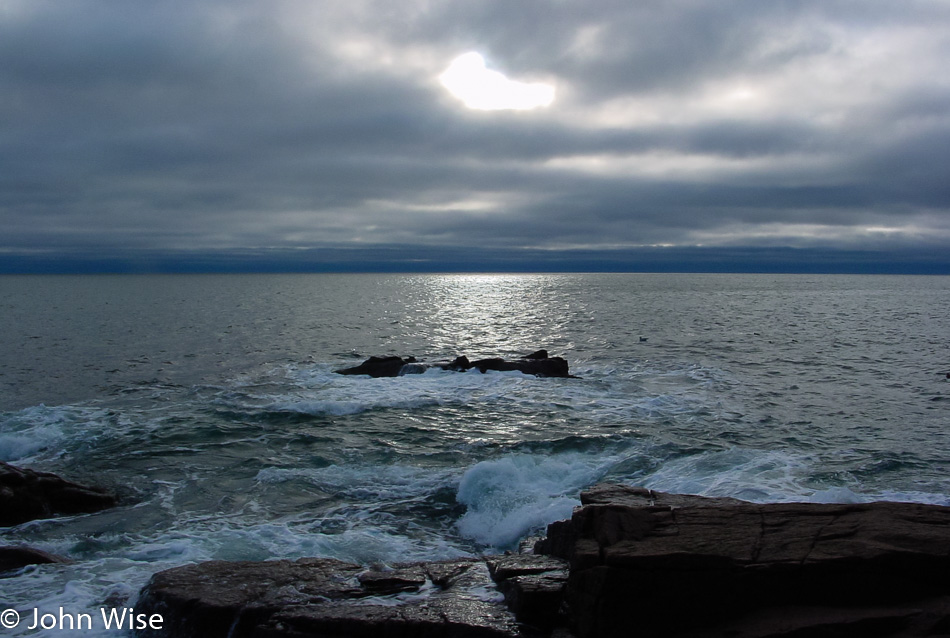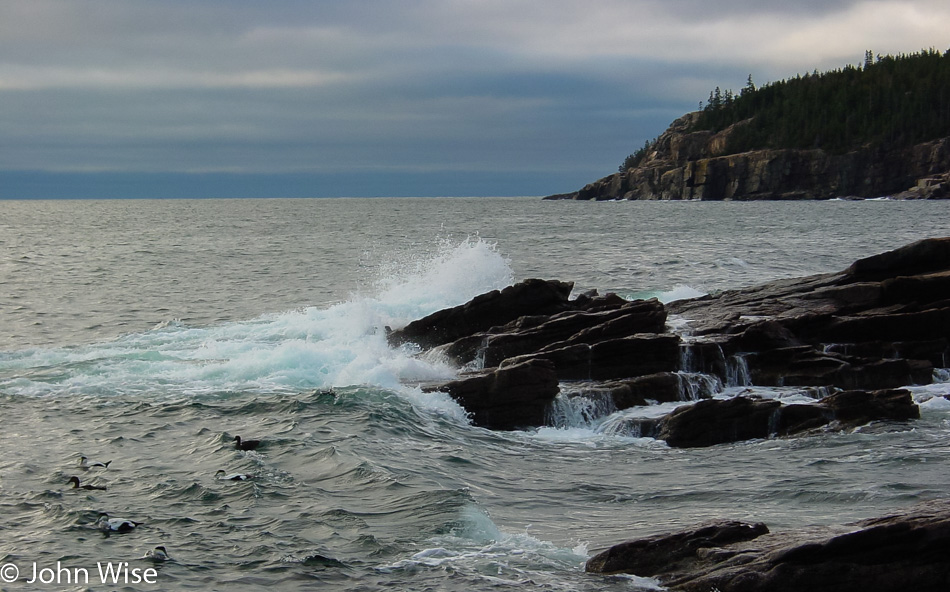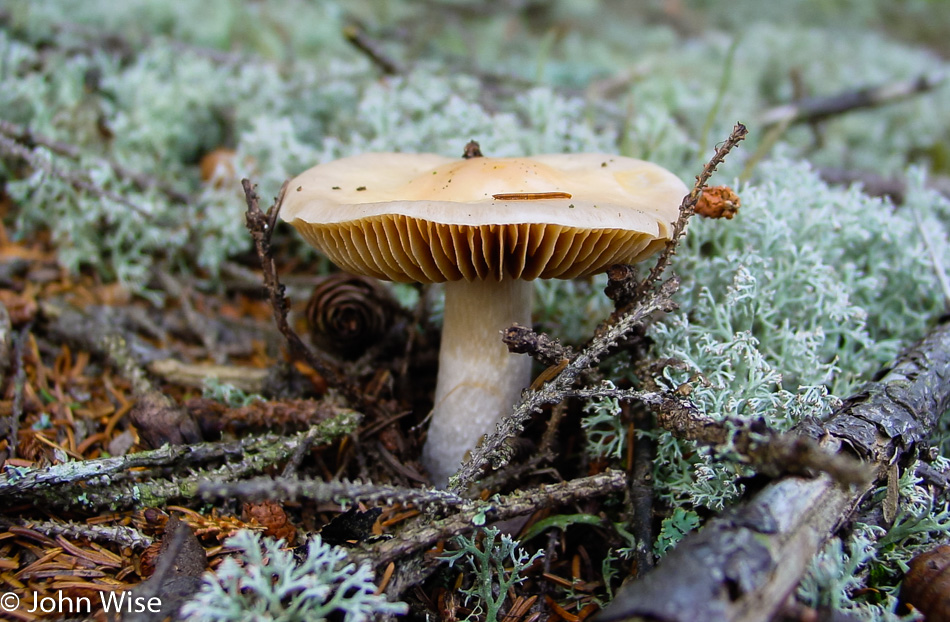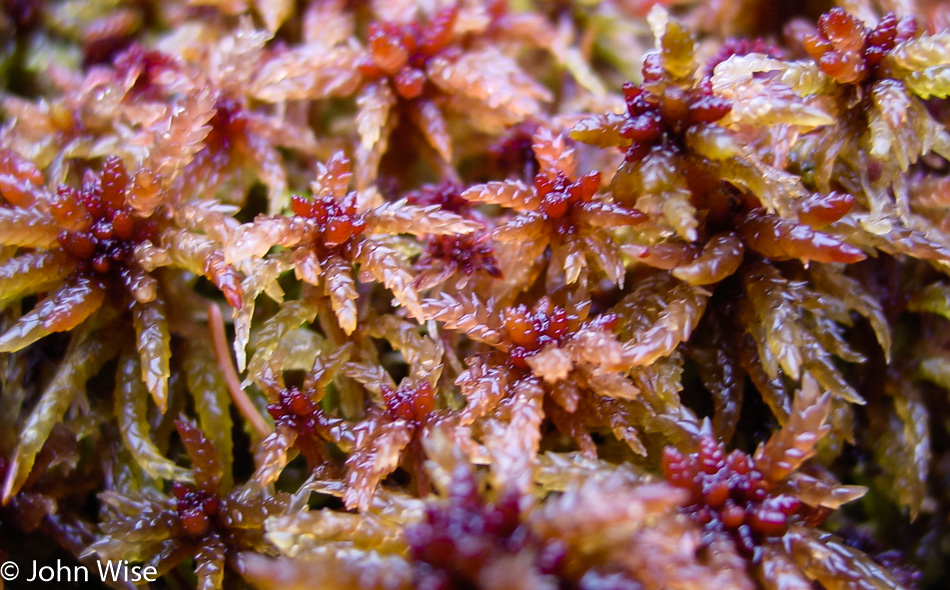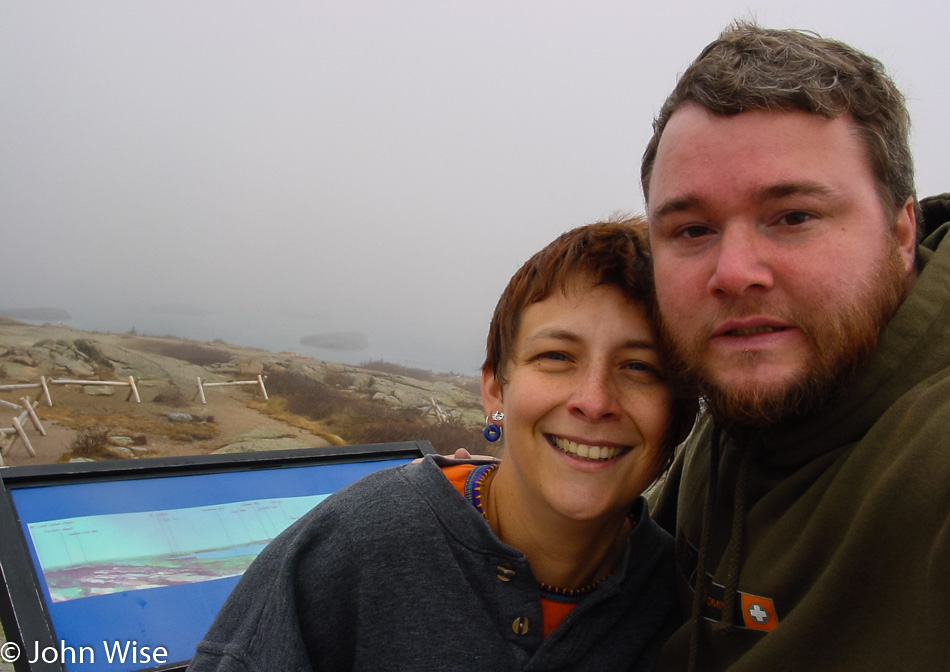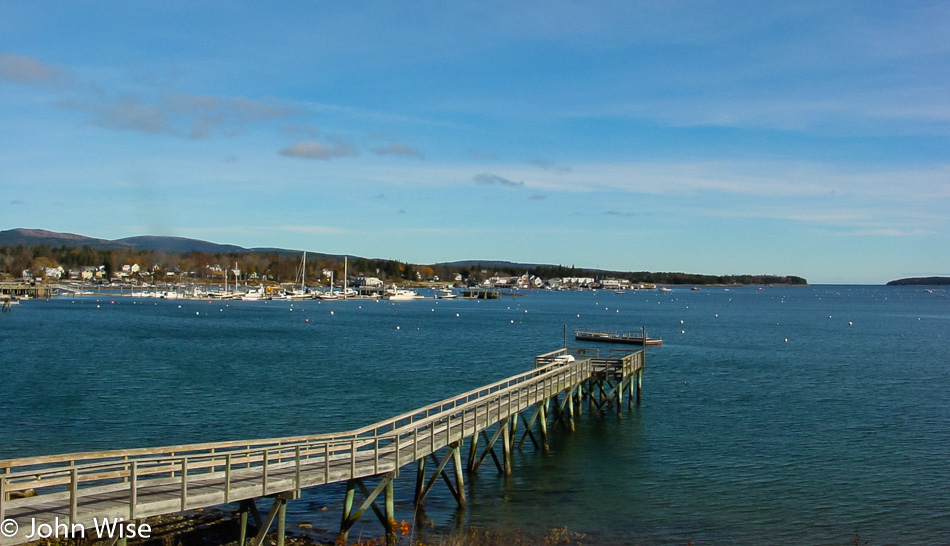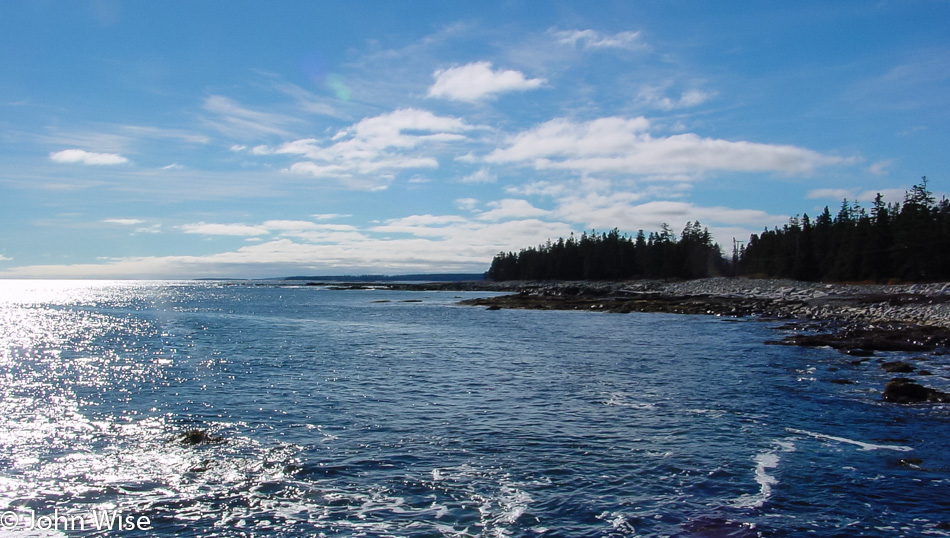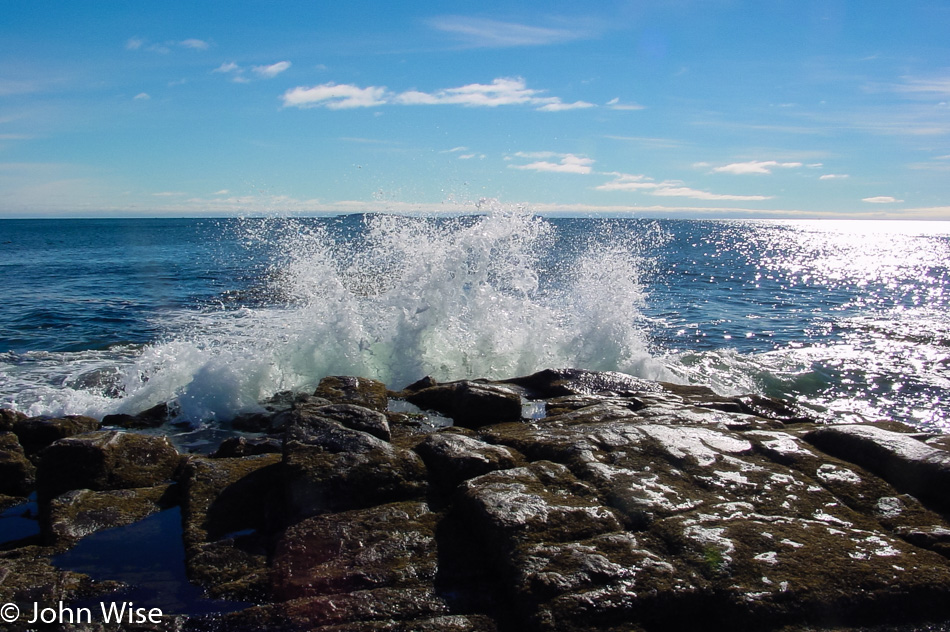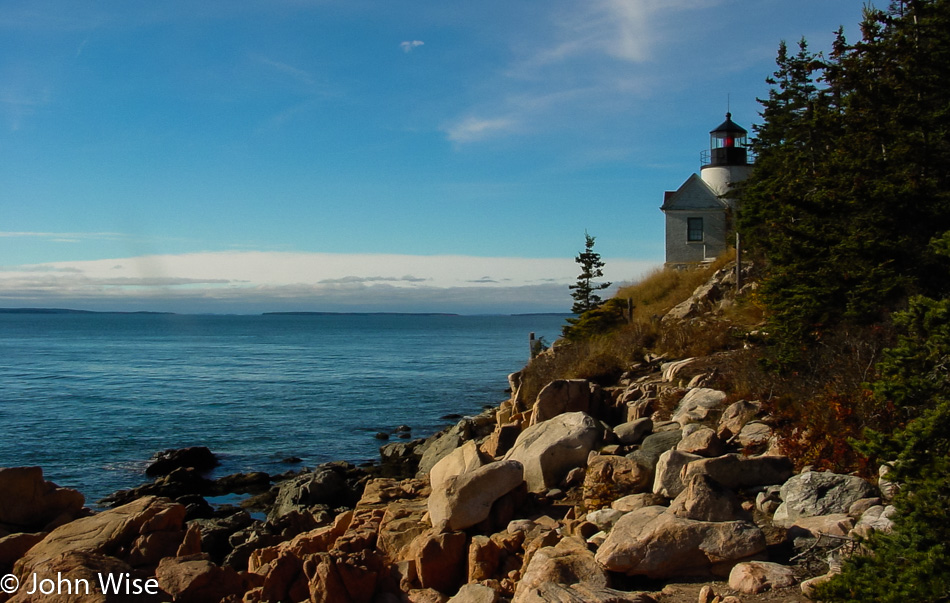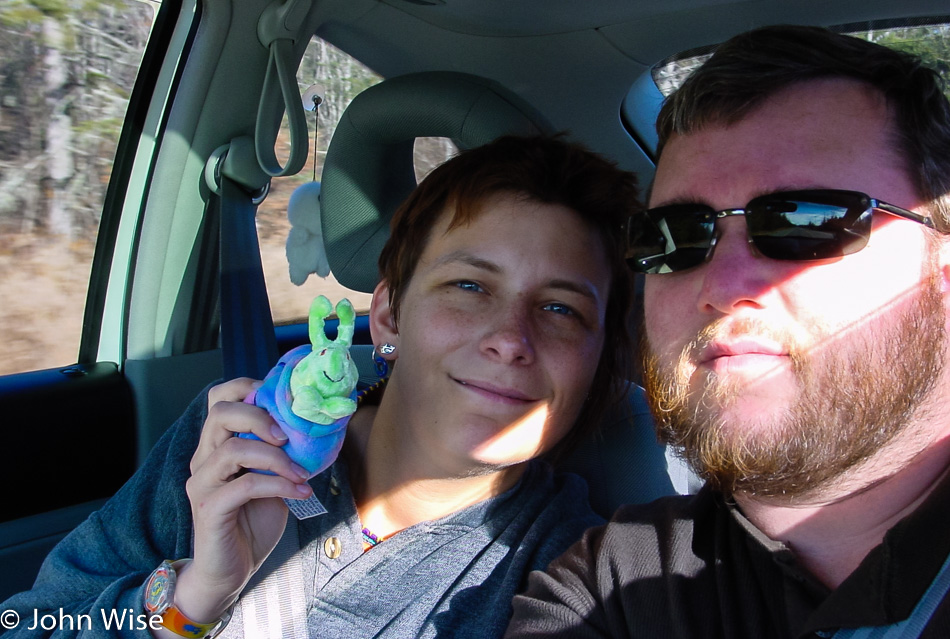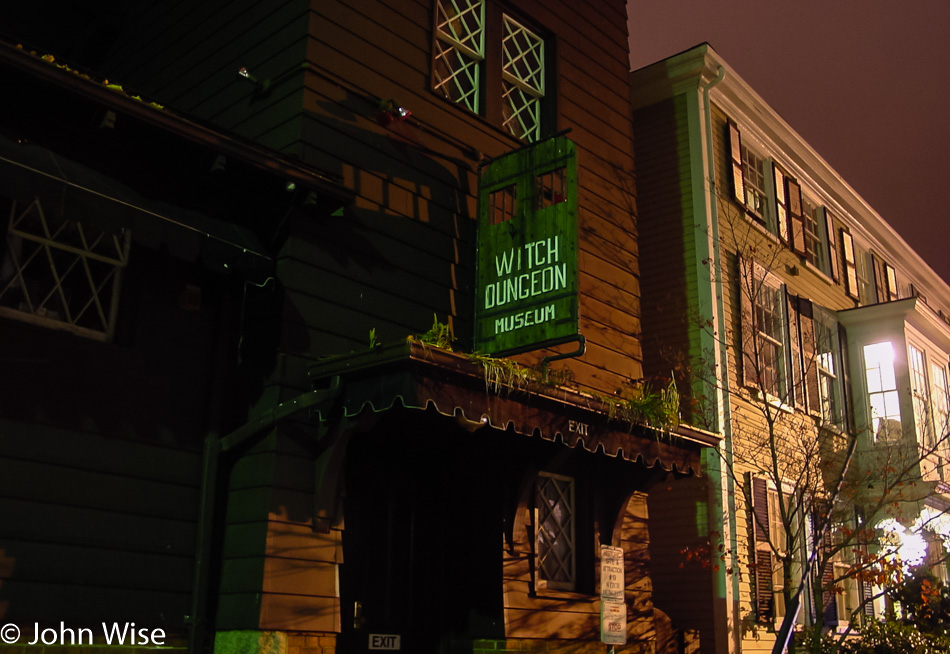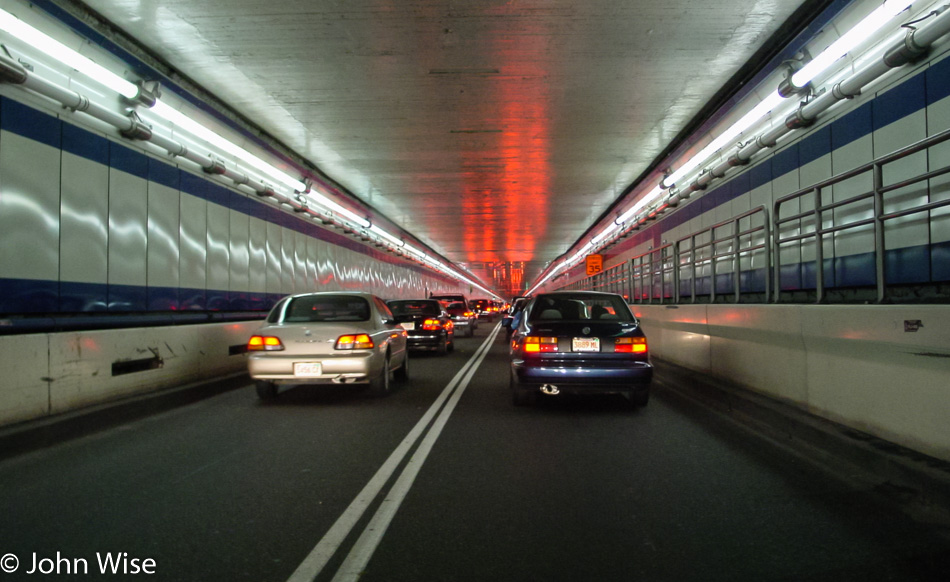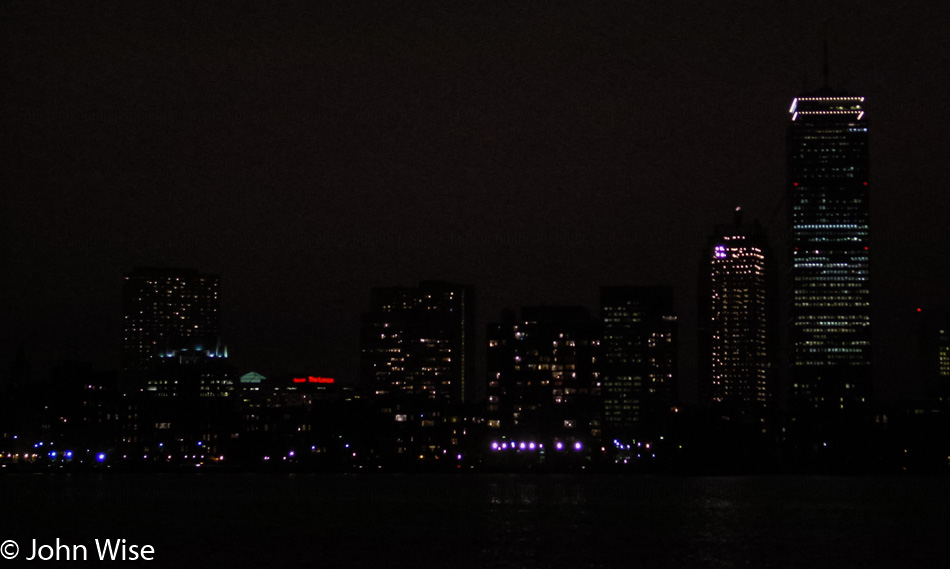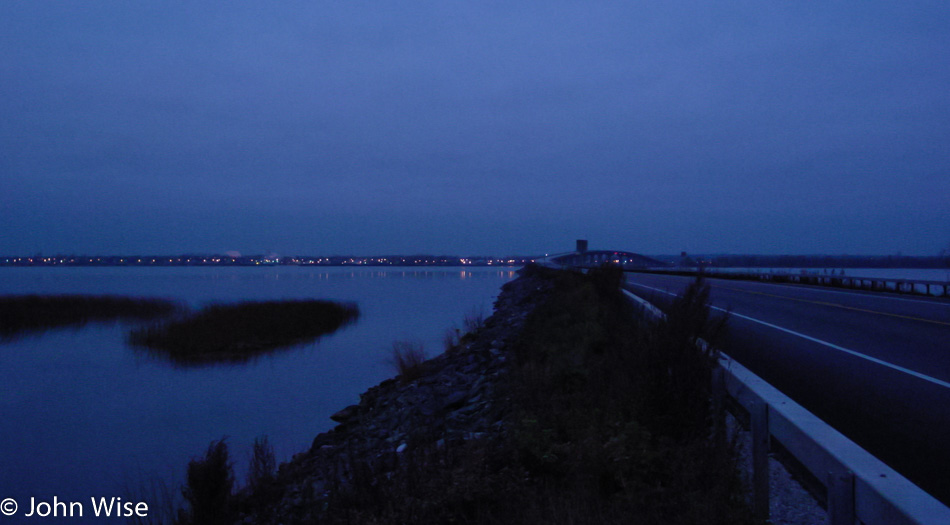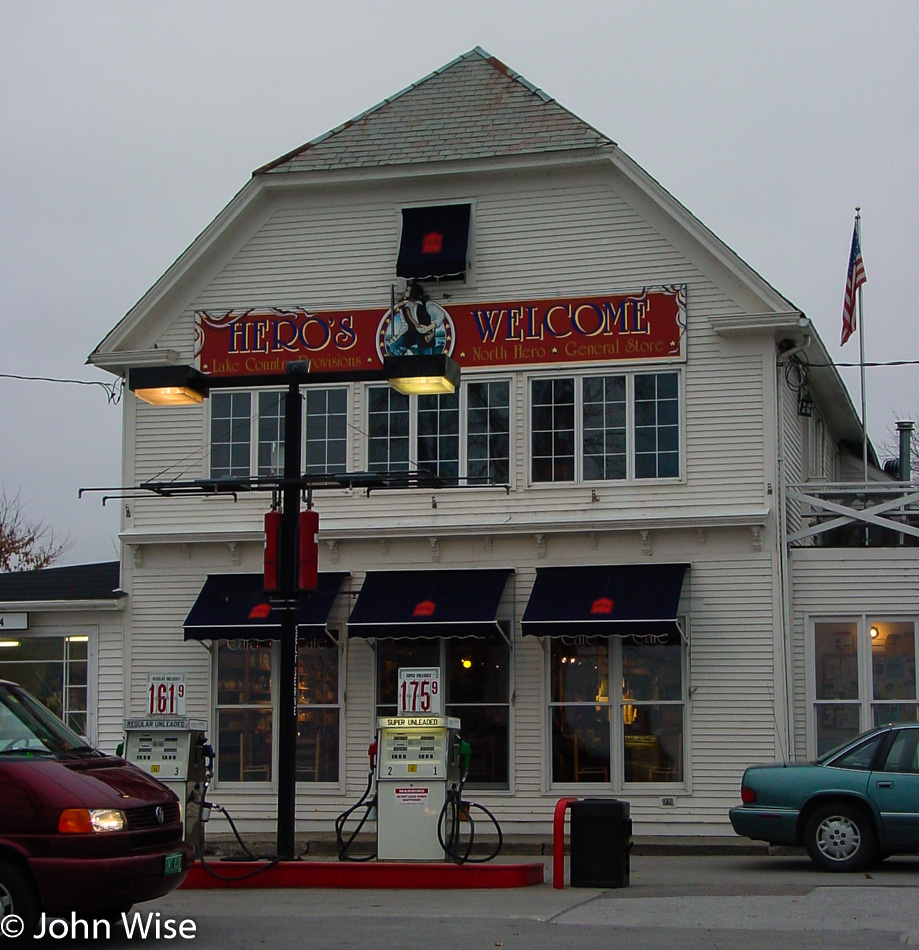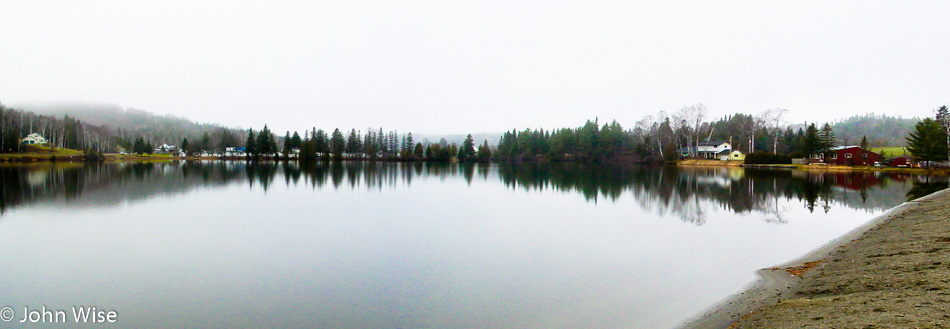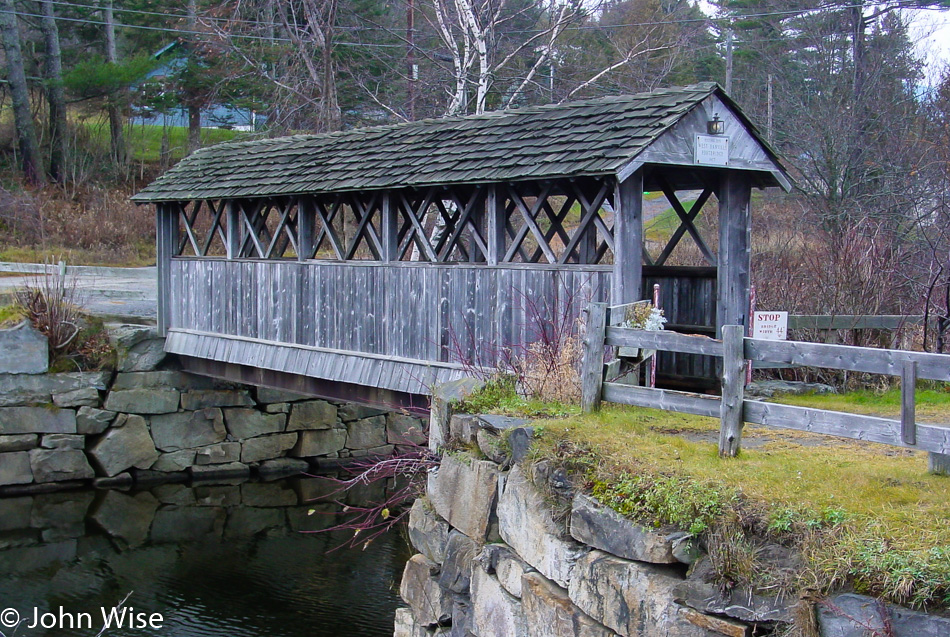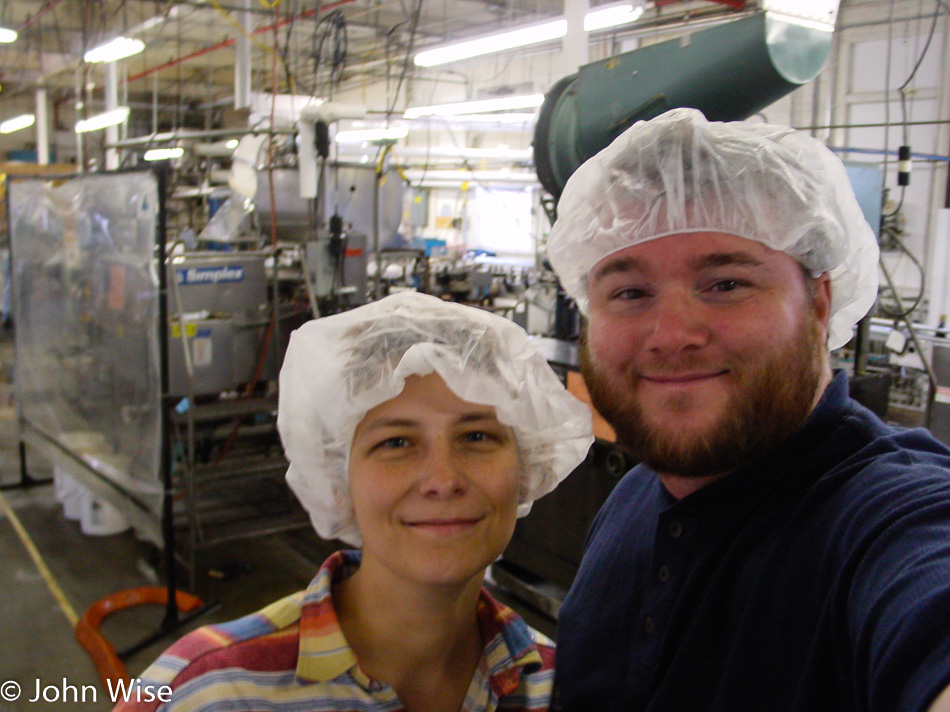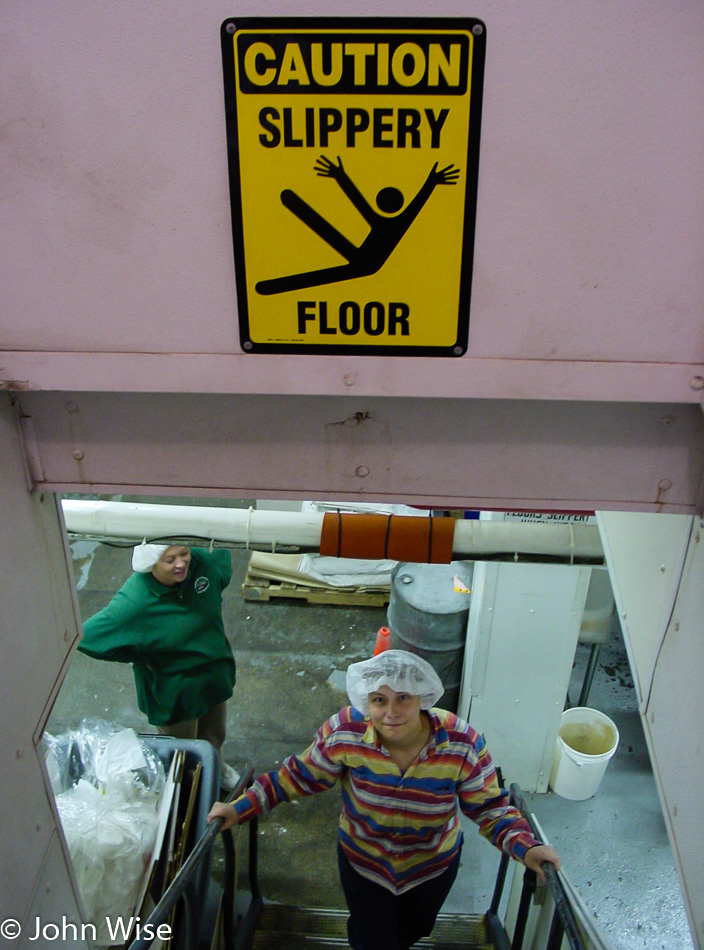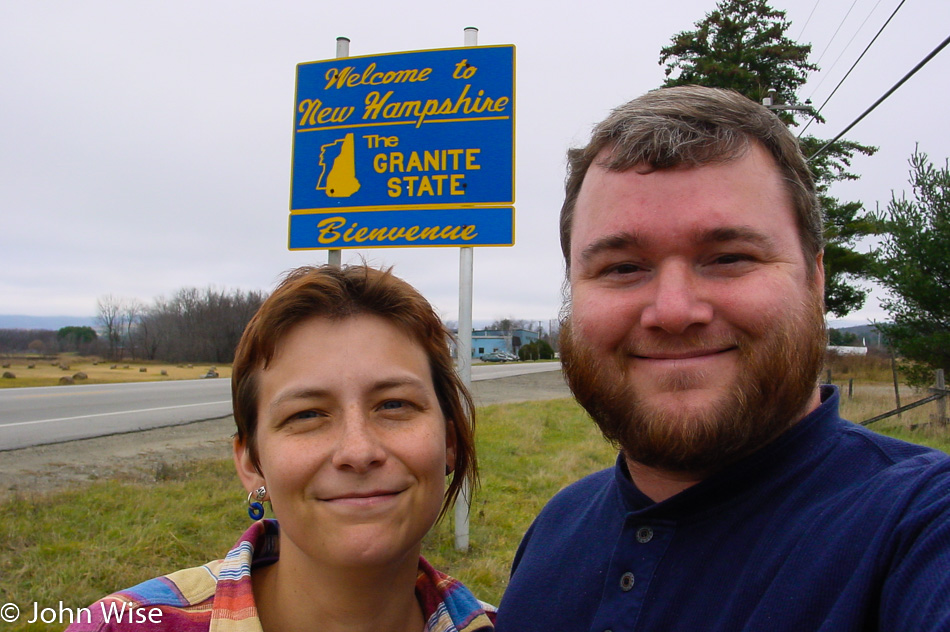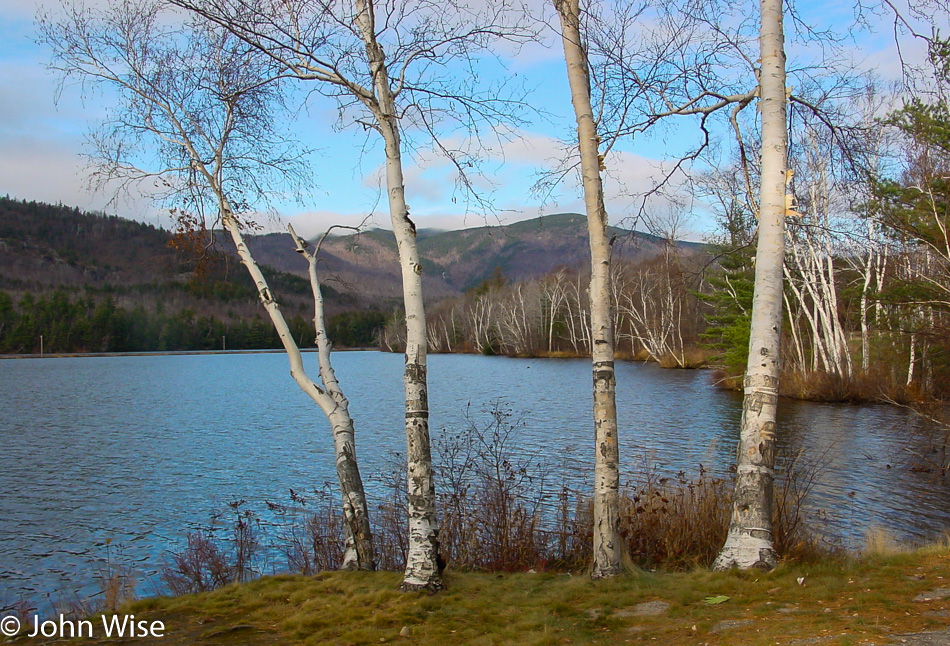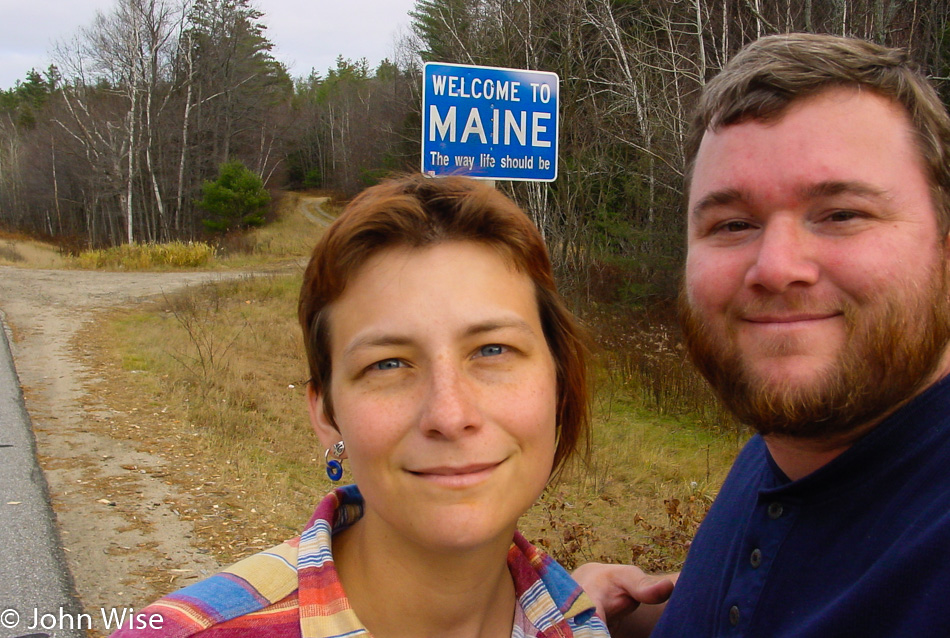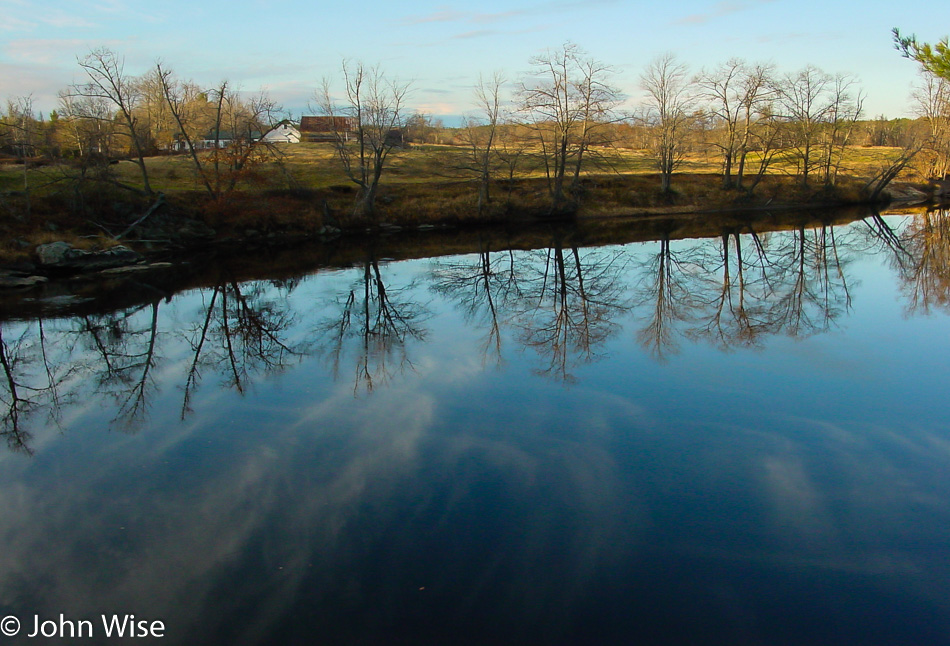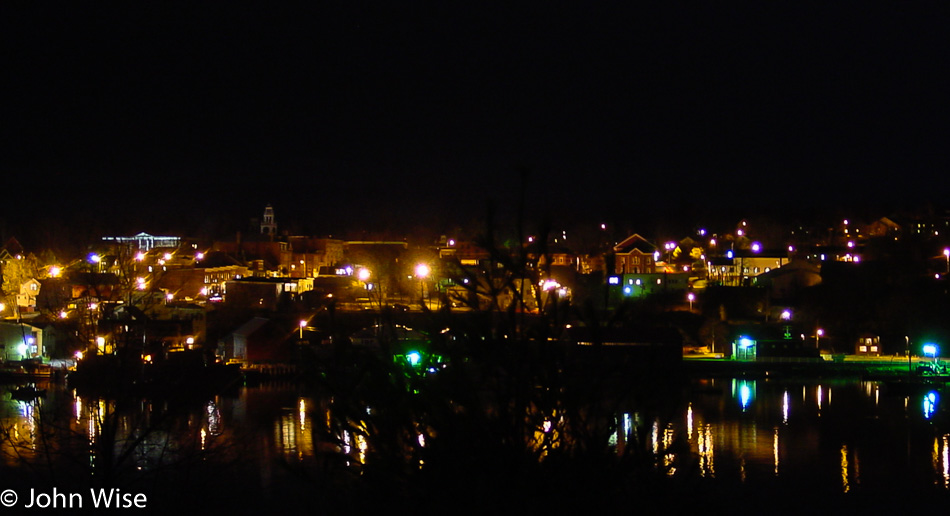
How do you turn a 240-mile, four-and-a-half-hour drive into an all-day affair? You travel with John and Caroline. But if you do, be prepared for our flavor of crazy, such as leaving the motel at 5:30 in the morning. Waking to a clear sky and some brisk weather, we were prepared to indulge the senses with more Maine than was originally on the schedule and to limit it to a smaller area for the sake of taking in the environment.
We stayed overnight in Ellsworth because of its proximity to Bar Harbor and the Acadia National Park to the north, but on stepping out of our room, we decided that our first visit was enough and that we should explore new territory, so we headed south toward Surry, Maine which became the location for our first photo of the day.
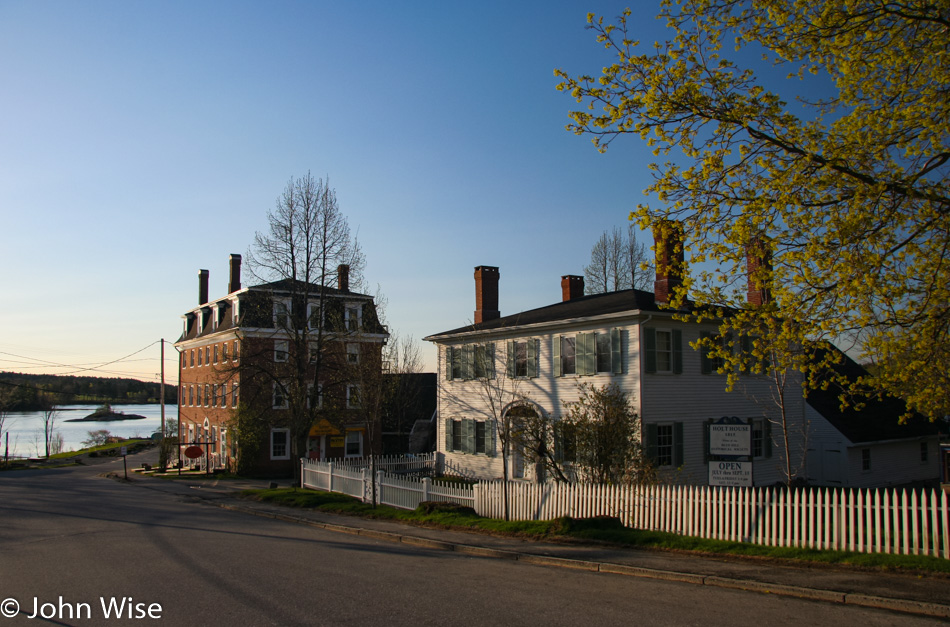
As we continue to meander across the countryside, trying to balance hugging the shore using roads that aren’t always in the best place to capture glimpses of the larger bodies of water attached to the Atlantic and being aware that we have a destination we have to reach today, we come to Blue Hill, Maine. These little villages on the various inlets, bays, and rivers make it immediately clear why the Bush family is so enchanted with coastal Maine.
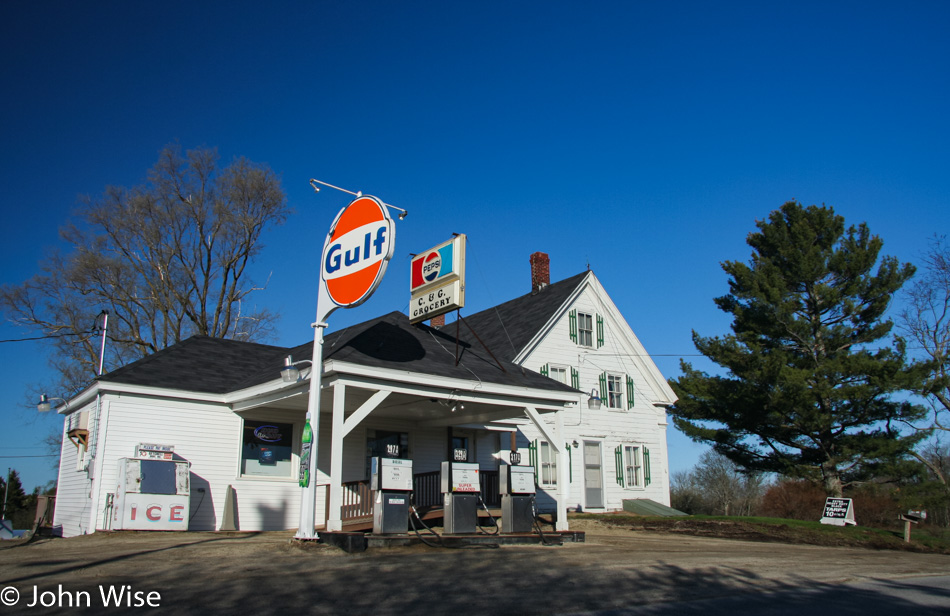
C&G Grocery in Sedgwick, Maine, is about the furthest we’ll head out on this peninsula today, though Little Deer Isle and the larger Deer Isle sandwiched between East Penobscot Bay and Jericho Bay are calling us.
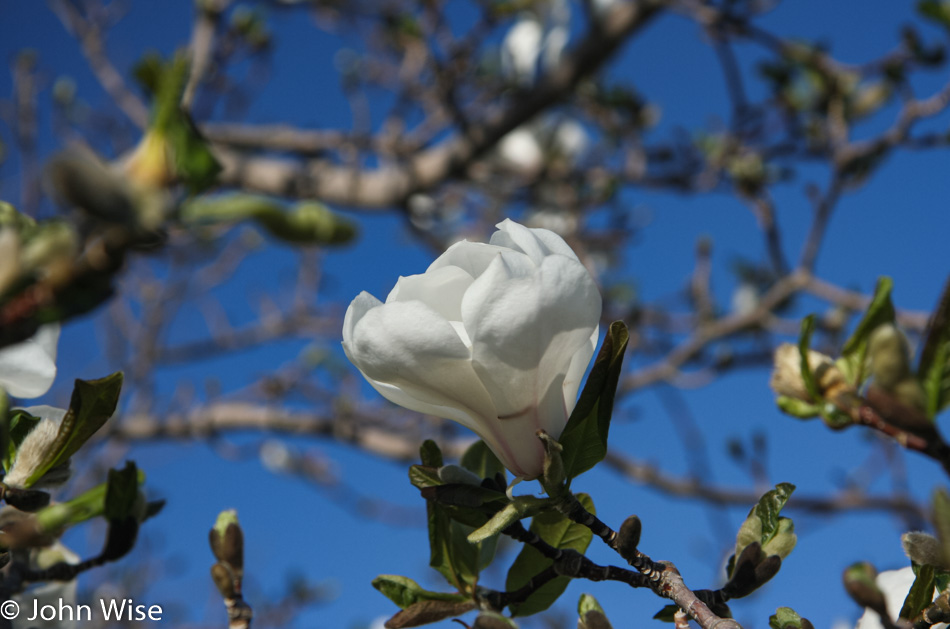
Instead, we’ll continue our drive of exploration and consider those islands in the bay as places that will hopefully one day draw us back to Maine for a third encounter with the state. Further north, we were aware of how the land was just moving out of winter, but here we are starting to see signs of spring.

Castine comes into view and whispers in our eyes that maybe we’ve found one of the communities we’d like to spend some of our retirement in. The idealism layer we are allowed to drape over our perception to make a town or village into the image we desire is likely delusional, but it’s far better than looking at these bucolic locations through the filter of the angry side of the population who are frustrated by the lack of jobs. What kind of jobs do they often want out this way? Unsustainable ones that would destroy the seaside and pastoral appeal to those of us who are traveling as they strip the land of trees and drag every last fish and ounce of coal or oil out of the surrounding area.

Trinitarian Congregational Parish of Castine, Maine, was established in 1829 and proudly boasts of its Protestant heritage coming from the Puritans who left England to help establish the United States. The community of Castine also lays claim to being one of the longest continuously inhabited areas in North America, occupying this area since the early 1600s.
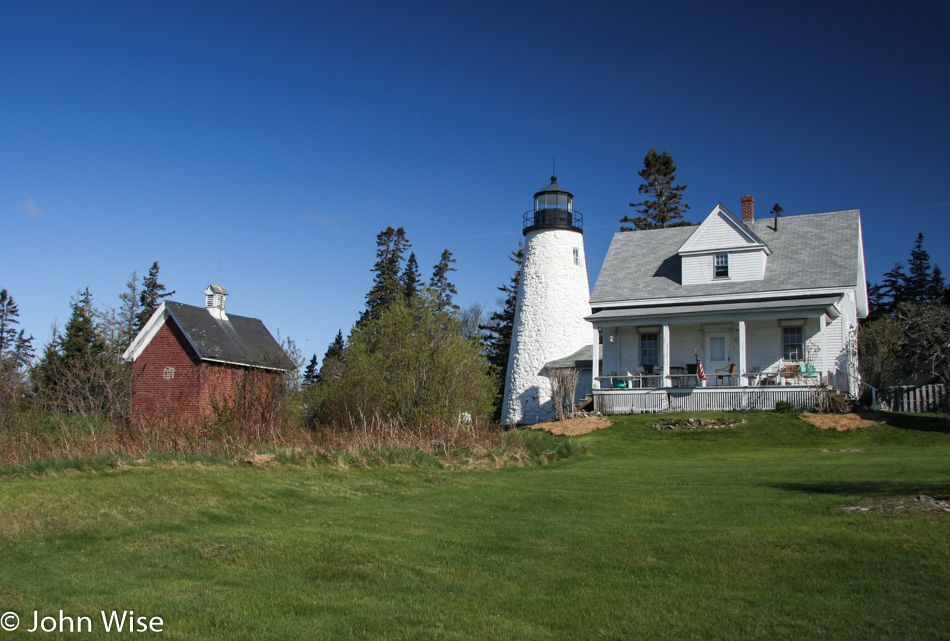
Dice Head Lighthouse here in Castine has been standing since it too was built back in 1829 though for decades now it sits decommissioned.
This small town is the epitome of a beautiful, if not perfect, seaside community. The population is tiny and gets even smaller as the local Maine Maritime Academy sees many of its students depart for Eastern Europe in early May aboard the training ship the State of Maine.

Heading up the coast on the Penobscot River, we spot and have to stop for this abandoned trawler that turns 70 years old this summer. Used originally as a fishing boat, it was acquired by the US Navy in 1942 and commissioned as the USS YP-414. Following the war, it reverted to its original name, FV Squall, and stayed in operation until it was removed from the registry of boats in 1977 and became a breakwater for the marina where it remains docked and rusting away.

We ate lunch at Verona Island’s Seabreeze Restaurant, which isn’t really important at all, but as we continued our trek south, we had to cross the Penobscot Narrows Bridge, which enchanted us with the feeling that we somehow knew this bridge. Getting home we learned that the cable-stayed bridge had just opened six months before and had been featured in the media as being one of the 100 best innovations of 2006.

Our second visit to the Purple Baboon in Belfast, Maine our first was back in 2000.

Add Belfast to the list of places we could call our summer home.

On the Little River in Belfast, just adding to the charm.
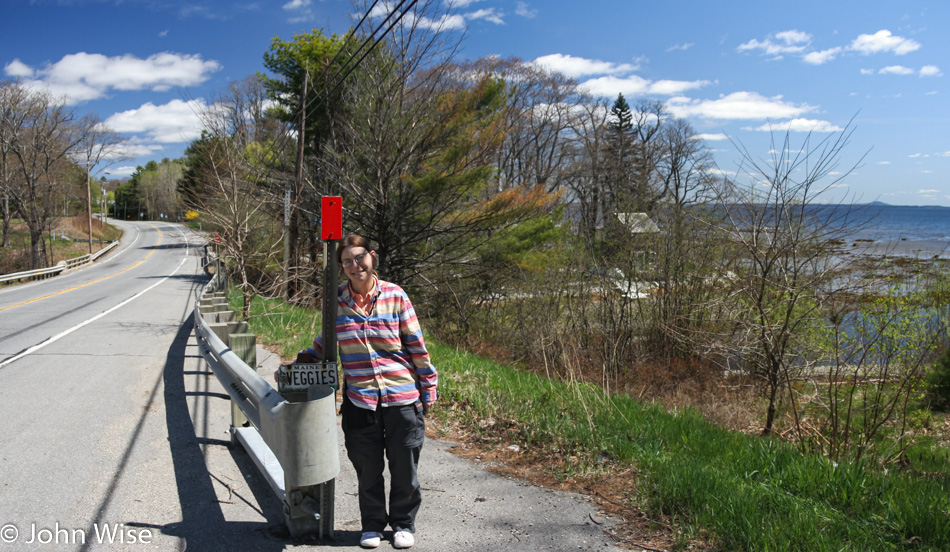
On Highway 1, we were driving along when I looked out to the sea and thought that might be a nice photo. Forget the sea view as I found this license plate from Maine that spells out VEGGIES. With Caroline being a vegetarian, it seemed like a sign from the universe that we are meant to be here instead of it just being a lucky find where someone lost a license plate off their car; that would be too simplistic an explanation. We dragged this back to Phoenix to hang on our wall as a souvenir of our time out here, seeing we couldn’t find anything else representative back at the Purple Baboon.
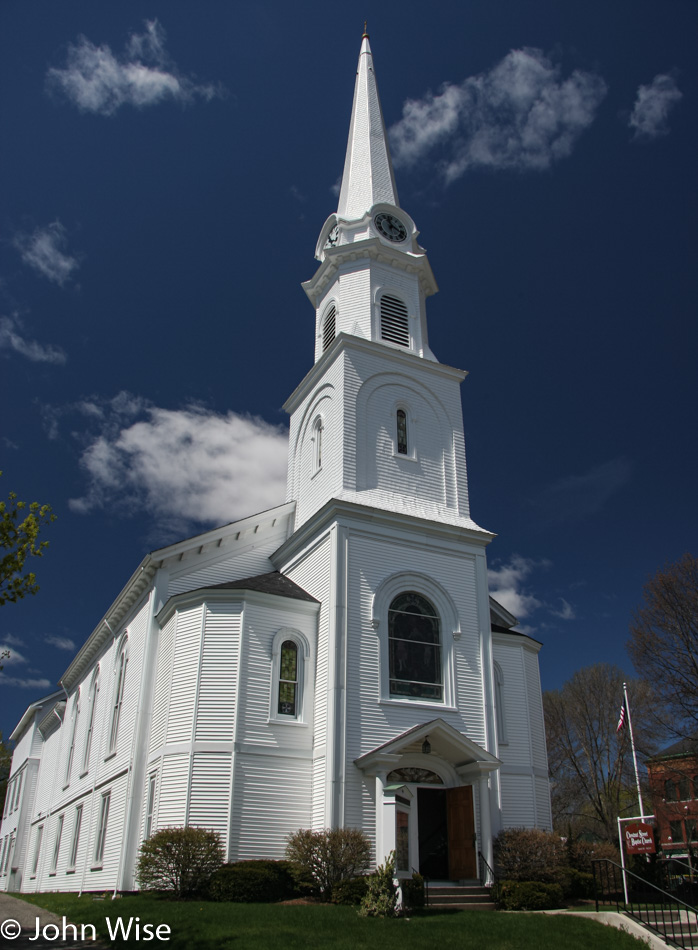
Chestnut Street Baptist Church in Camden, Maine, represents yet another faction of the Puritans as a separatist religion that was on its way to America to practice their flavor of fundamentalism back in the early 1600s. Four hundred years later, we’ve brainwashed ourselves into believing in a righteous form of Christianity to an extent that we cannot perceive our own radicalized beliefs, which, from my perspective, look a lot like Islamic fundamentalism. I resent these practices with a belief in some outer-space-inhabiting deity who is portrayed as a petty-minded bigot full of rage that casts unsaved souls into an abyss while rewarding whack jobs who propagate agendas of hate and intolerance with eternal life and/or virgins. Give me a break! Although I’ve got to admit that many religious buildings that celebrate their god(s) are amazing. Maybe we should pray to architecture?
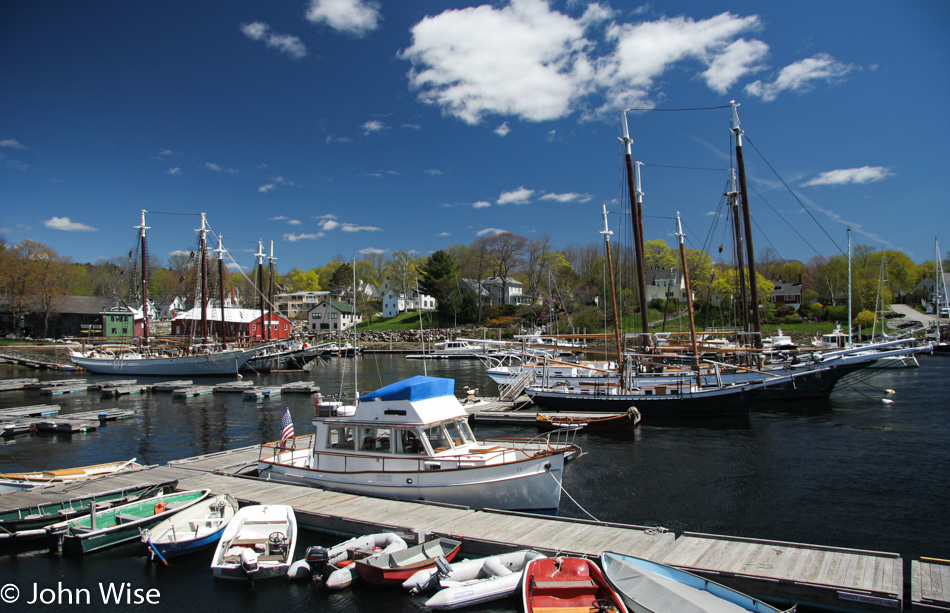
Camden Marina plays host to vessels that should be ordained as holy craft as they shuttle the fragile souls of humans over the dark and mysterious seas, which have a fierce power to consume lives while offering nothing in the form of redemption. Maybe the sea is the real God?

Somewhere on Highway 1 on the way to Portland, I stop at my personal lord and savior who has set up shop in the back of the mobile church of commerce. I’m a Foodatarian who prays three times a day, sometimes five, in the direction of the dining table. On that altar, I crucify the body of the animal and vegetable before consuming their flesh as a sacrament. Sadly I practice some of the worst aspects of Catholicism as after consuming the soul of the meal that failed to accept me as the son of God; I banish it to a life in hell by turning it to shit and sending it into the darkness of the eternal sewer. Maybe that lobster stew will see the light and find my truth before it, too, must suffer damnation.

Last great view of the Maine coast before getting on the turnpike and cruising right through New Hampshire. I’m done with the religious stuff, well, at least until we get to Salem, Massachusetts, and we can start examining the religious zealotry that led to the burning of witches. Seriously, what the hell is wrong with humanity?
We should all go on vacation and worship beauty, pray to blue skies, and baptize ourselves in the waters of the sea for the sake of communing with the fishies.

You may have the impression that when we travel, we avoid large cities – you would be right. On this day, though, we intentionally made our way into the heart of Boston and grabbed a parking spot at the Boston Commons. Turns out that Boston really is a nice city, well, the little we saw of it. Diversity is the most obvious feature; history comes on quickly, and friendliness is just around the corner. Our tour was a fast one, with only two hours on the streets.
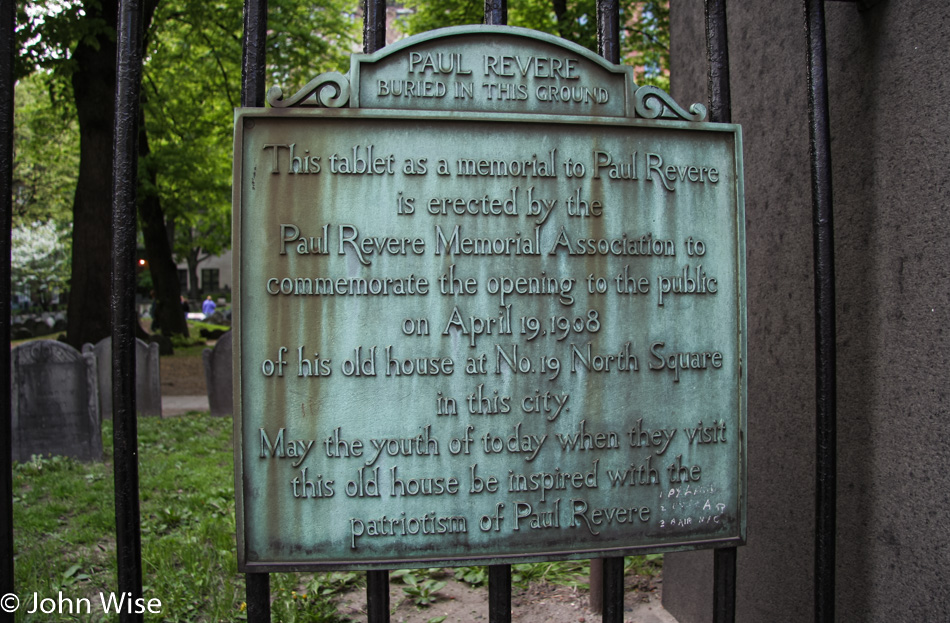
We checked out the grave of Paul Revere and tried to identify the exact spot of the Boston Massacre, which we were standing on, but the signage wasn’t very good (and it doesn’t help that this historic site is now a traffic island). For Caroline, the highlight would have been the site of the Boston Tea Party, but we couldn’t find it for the life of us – it appears the area is under construction and difficult to approach for the time being. A friendly guy on the street and his girlfriend told us how great Boston is and only felt sympathy for us living in Phoenix. Both had tried living in Phoenix but found it too impersonal and ‘cold.’ China Town is small compared to San Francisco’s, Washington D.C.’s, and Los Angeles’s China Towns, but hey, at least they have one.

Too bad we didn’t have more time to visit the historic side of Boston, but at least we are now intrigued and will hopefully find ourselves quickly returning to Beantown.
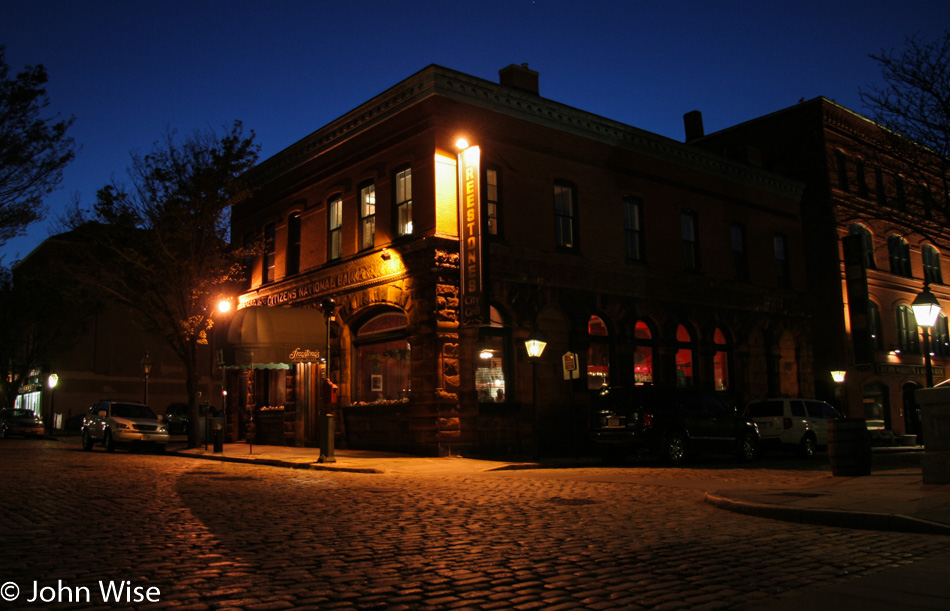
Our destination today is New Bedford, where we are staying at the Melville House Bed & Breakfast – right in Herman Melville’s old room; hooray for whales! After we checked in, we ventured into the old town and found some dinner at Freestone’s City Grill in a former bank built in 1872 that is part of the New Bedford Whaling National Historical Park. Besides a dish of local quahog, you should know that Caroline also enjoyed a Whale’s Tale Pale Ale!

Arriving at night was a stroke of luck as under the cover of darkness, the charm of 1850s New Bedford seemed to still be alive. Cobblestones and old-fashioned lights with the architecture looking much like it must have when Melville used it as part of the story that was as big as a whale.
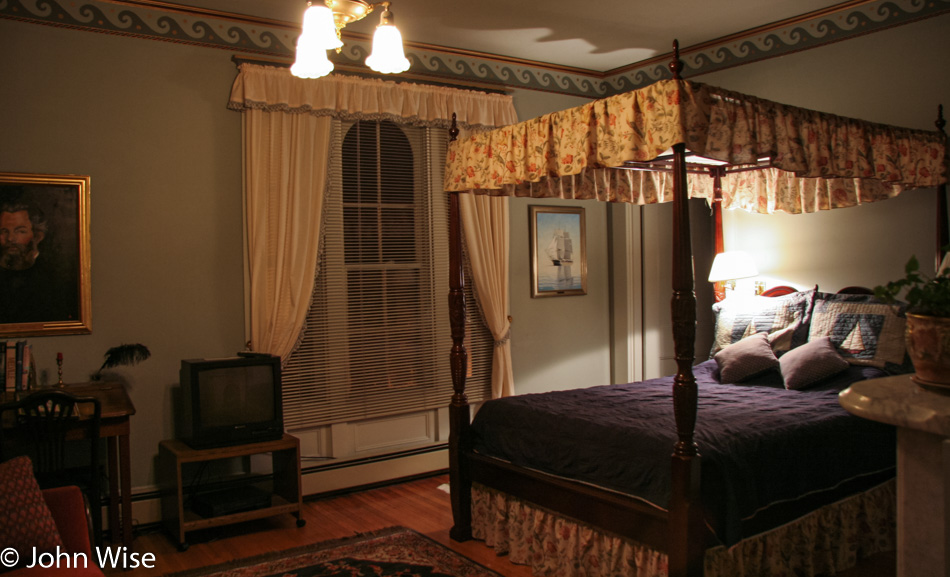
This might have been Melville’s room but might not have been, as nobody knows for certain. It is known that Catherine Melville hosted her brother here, but it is also true that it was well after 1850 when Melville penned Moby Dick and his sister lived here. No matter these small details as after Caroline read this amazing book out loud in the car to us over the previous months, we are simply delighted in this opportunity to dwell in the shadow of Melville and what he captured 157 years ago.
